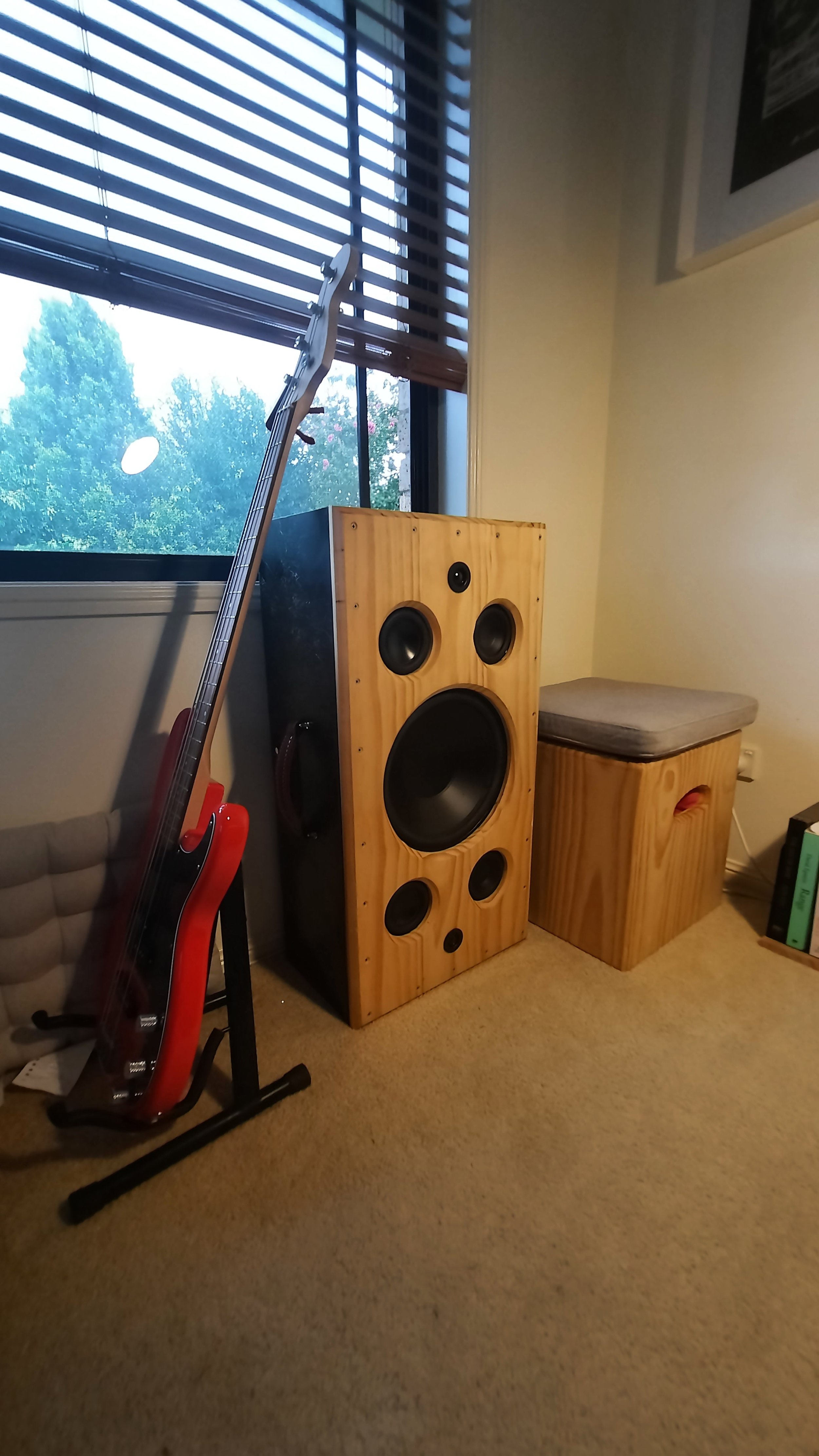
Speaker Design
From scratch to sparkling
When lockdown hit in 2020, I found a new passion.
I looked into pursuing projects to make use of the time indoors,
little did I know I’d go down an audio-design rabbithole.
Learning for the Use Case
Audio design taught me plenty about the limitations of research.
I’m not an audio engineer, although to create a speaker I had to learn. Creating a knowledge base, understanding how hardware interacts, drawing electrical circuits and using CAD software to draft audio experiences all had steep learning curves.
There was no end to the amount of information to improve my speaker design, and my own engineering ethicacy. However, there was a critical point where my research was benefitting my project far beyond what the brief required, with constantly diminishing returns.
I quickly learned exactly what my benchmark in quality was, performed research and testing to that end, and no more. In my experience this is ultimately well worth it, as my projects were generally not built for the audiophile community. I’ve never had an issue with a customer’s commission. Instead, my speakers competed with the forms, feeling and sound scapes of generic retail speakers under $3k.
‘Ultra Esky’
This project was done on commission with a football coach. He saw a speaker I brought to my team’s training and wanted to see if I could offer anything unique over that available in retail.
With plenty of time on the phone, I made sure I was identifying his needs and requirements. I designed and built esky with a speaker built in. The brief came down to: portable, big bass, can fit in a car boot, and can hold a case of beer.
This project came with many difficulties. At this stage I was still inept with carpentry, however the design held up through research and preparing.
The Ultra Esky holds 57 Litres, and is build with a 30mm^2 timber framework, which supported walls of high density foam. 3mm plywood covers all sides, and is heavy caulked, painted and waterproofed. It’s entirely portable, with the bass scooping down to 37dB. The client was in love with it. As each wall constituted of mainly foam, it’s surprisingly light.
Using a class D amp, configured in mono with a 6½ inch woofer with a huge vent, and 6hr battery life, the Ultra Esky puts hairs on your chest!
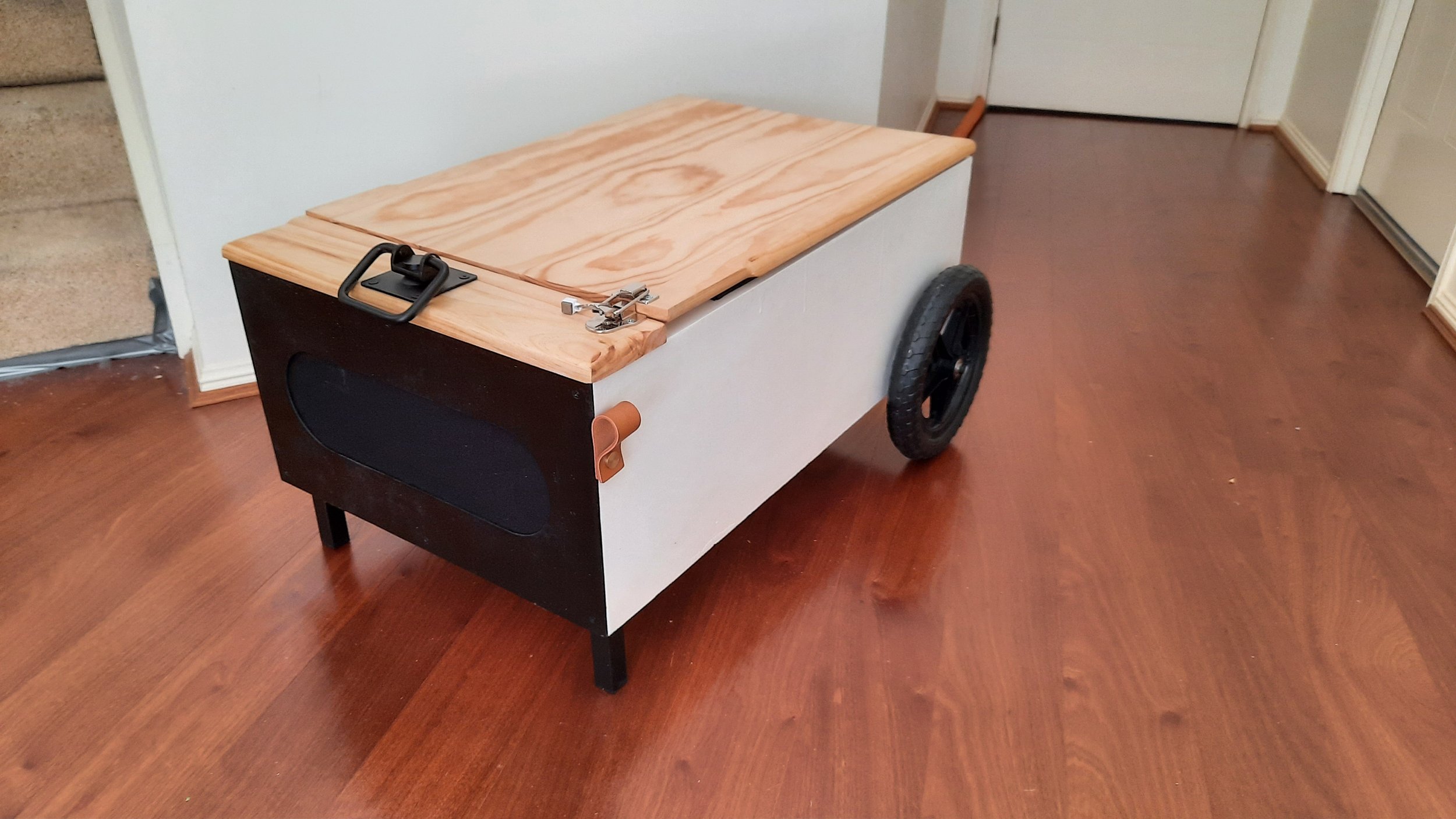
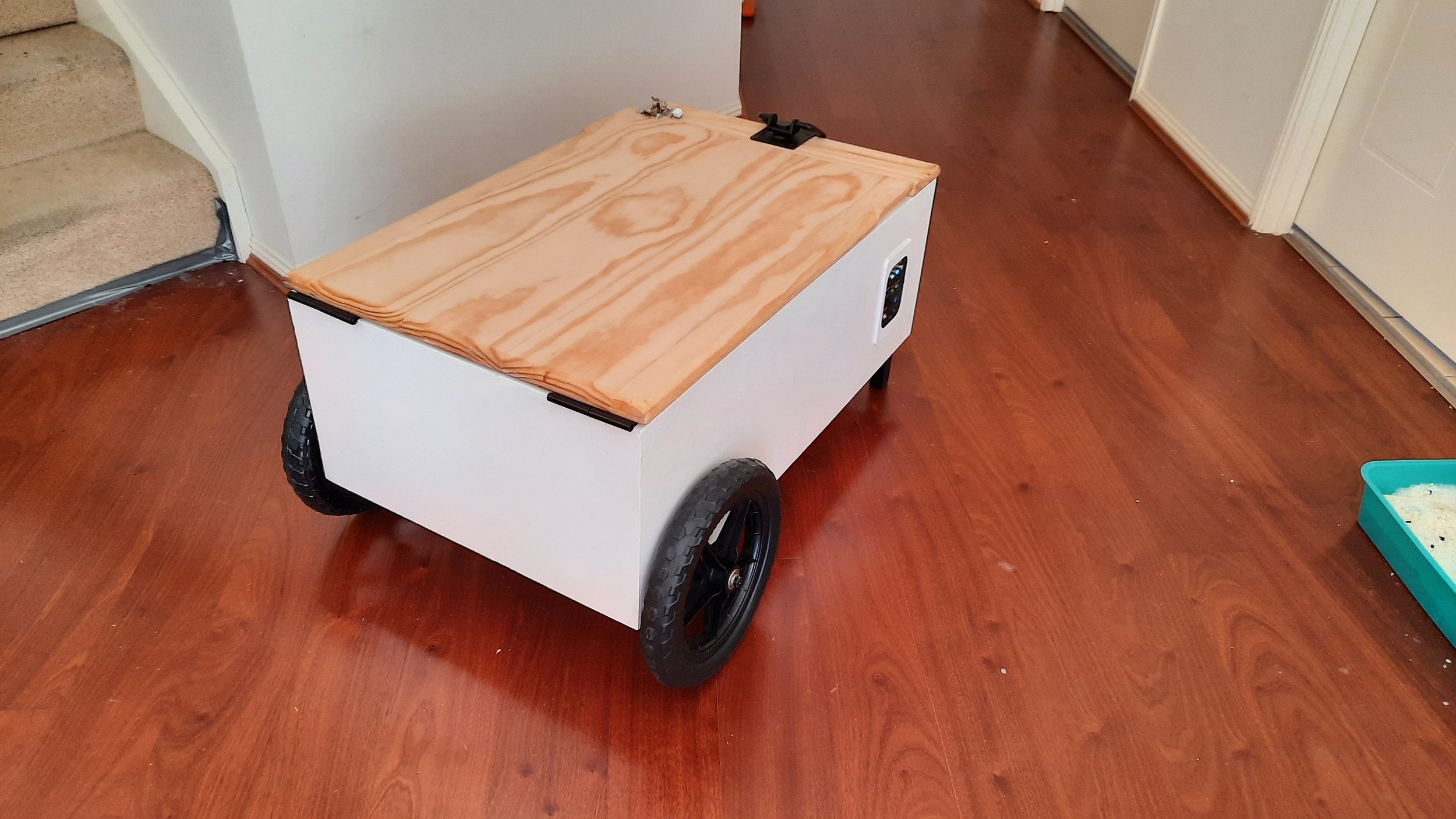
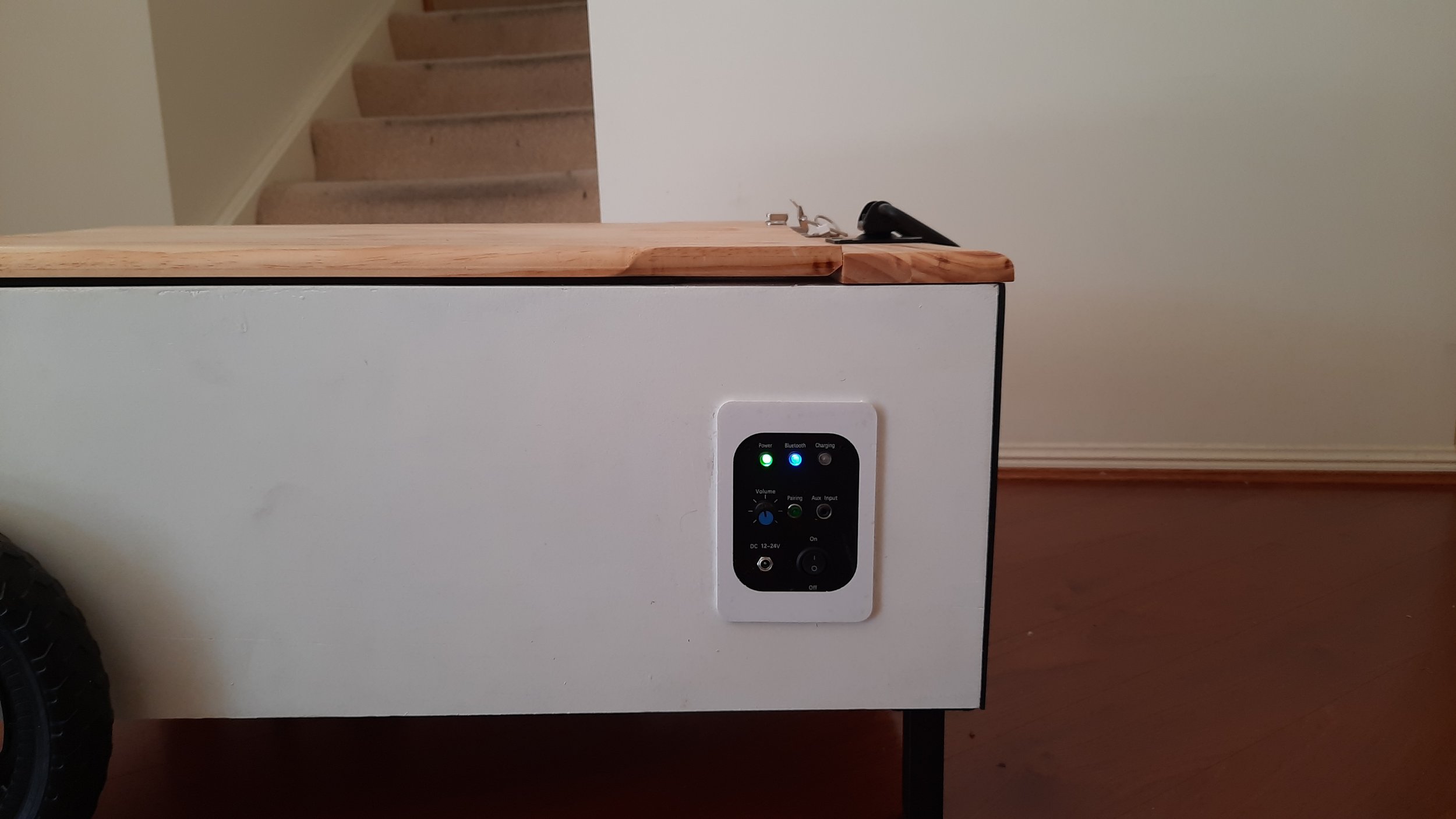
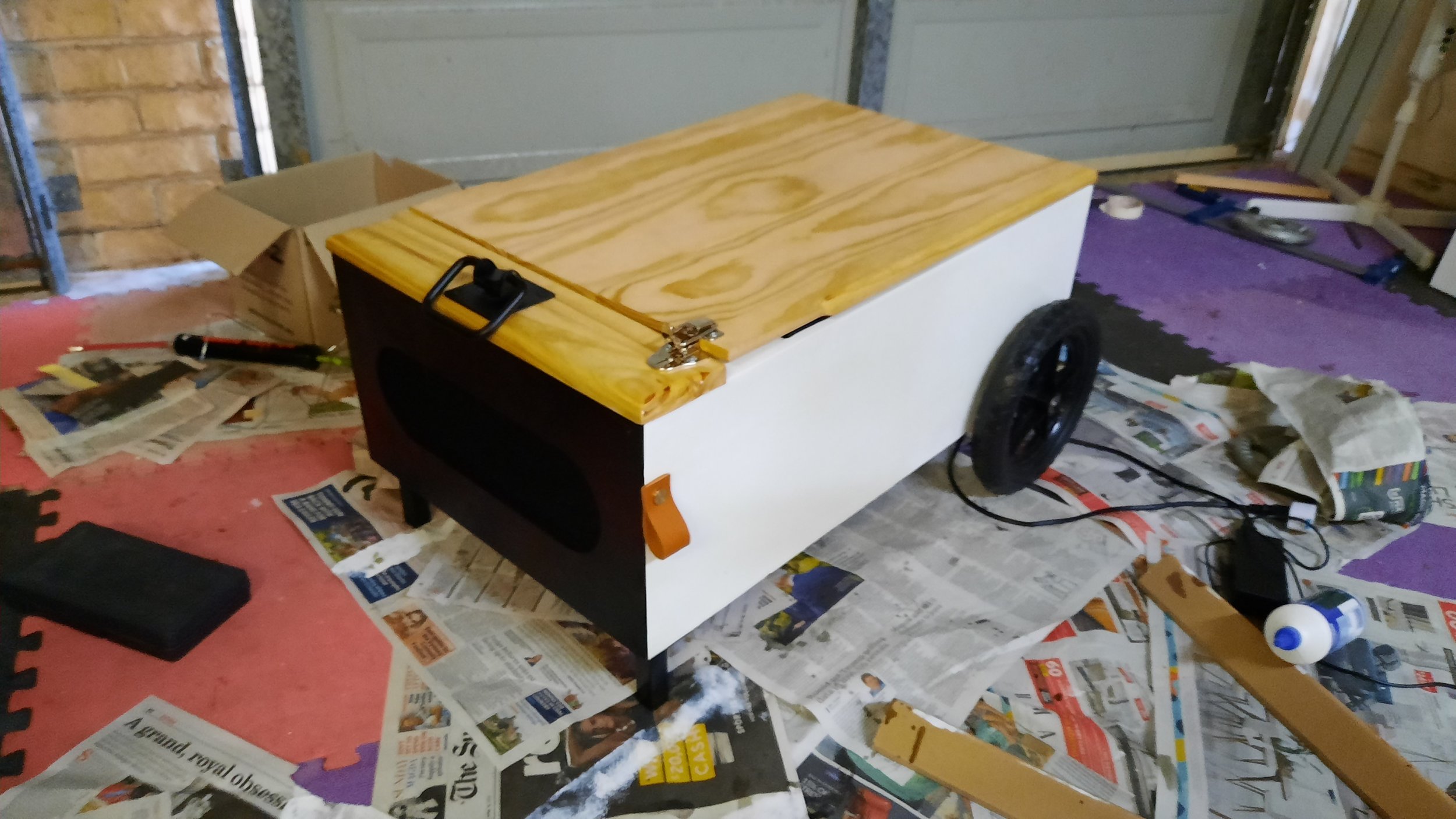
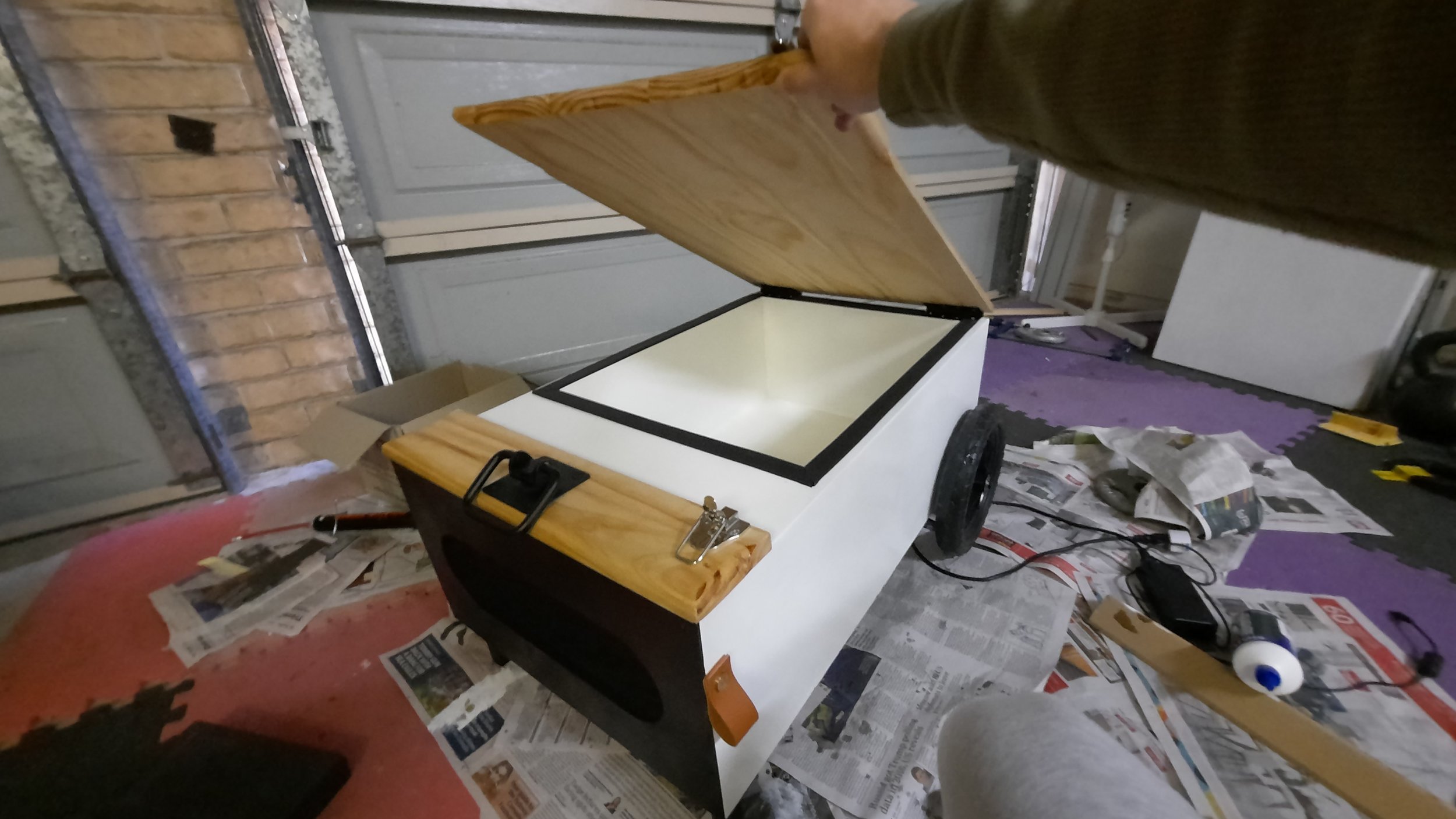
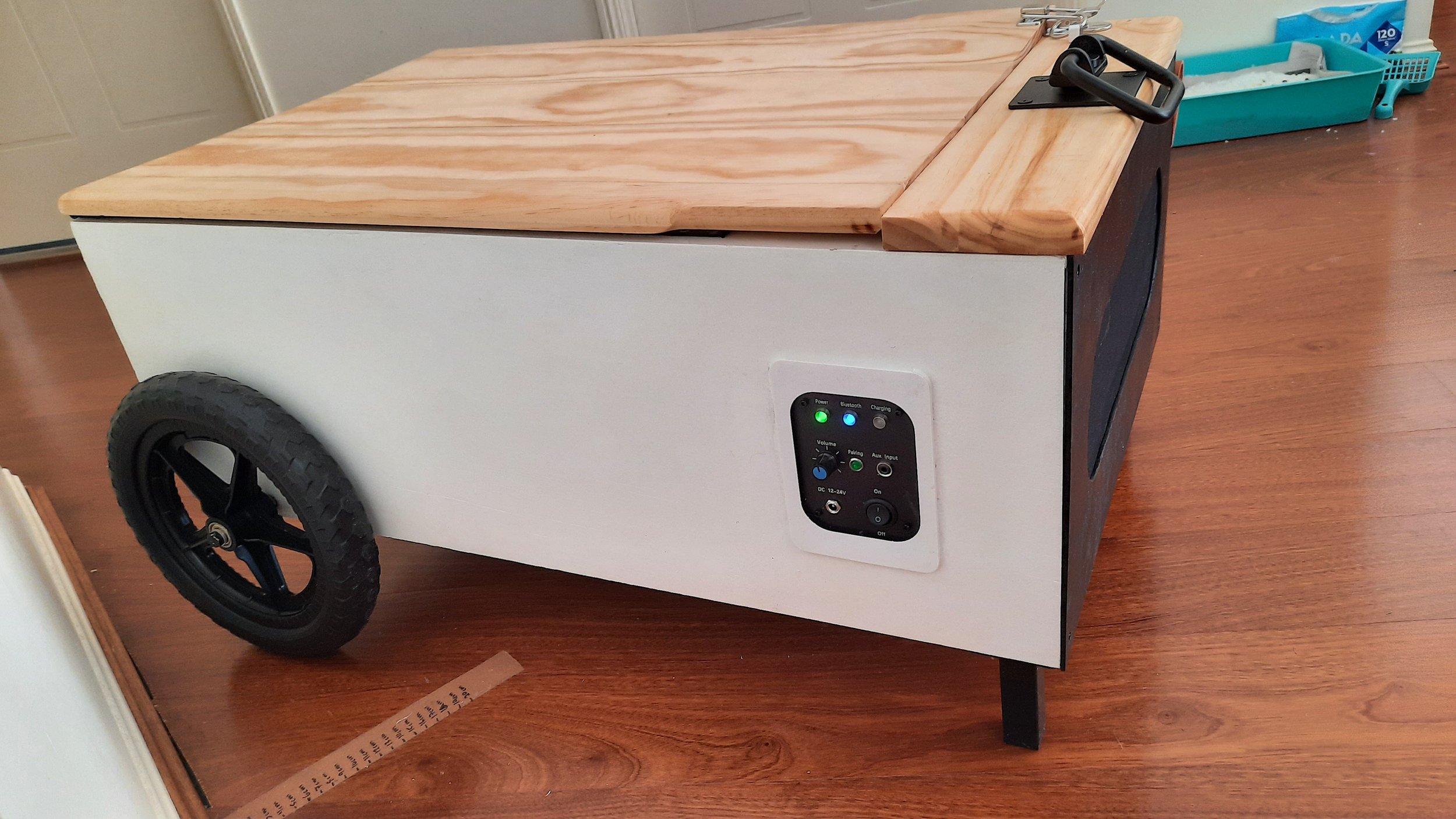
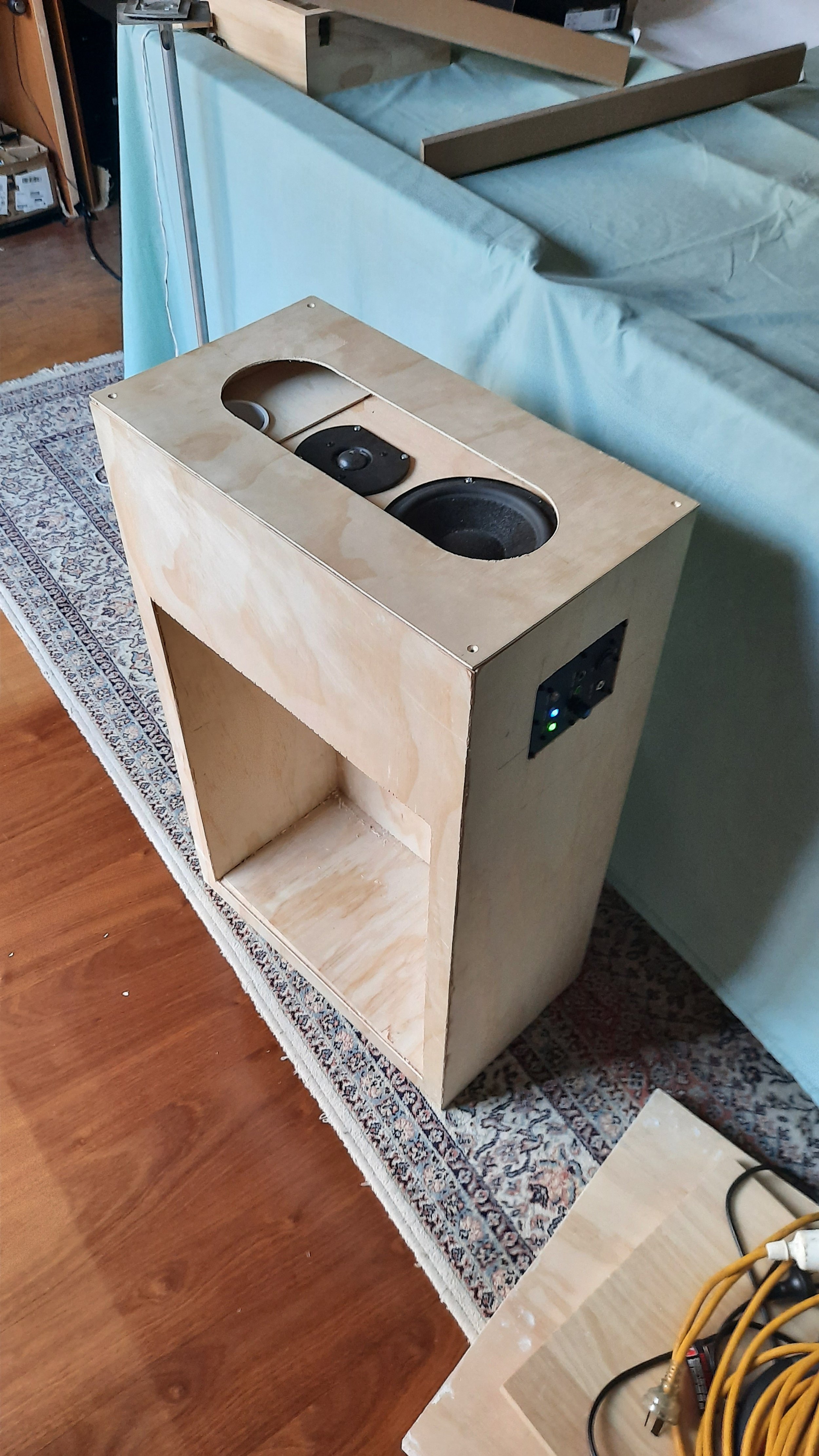
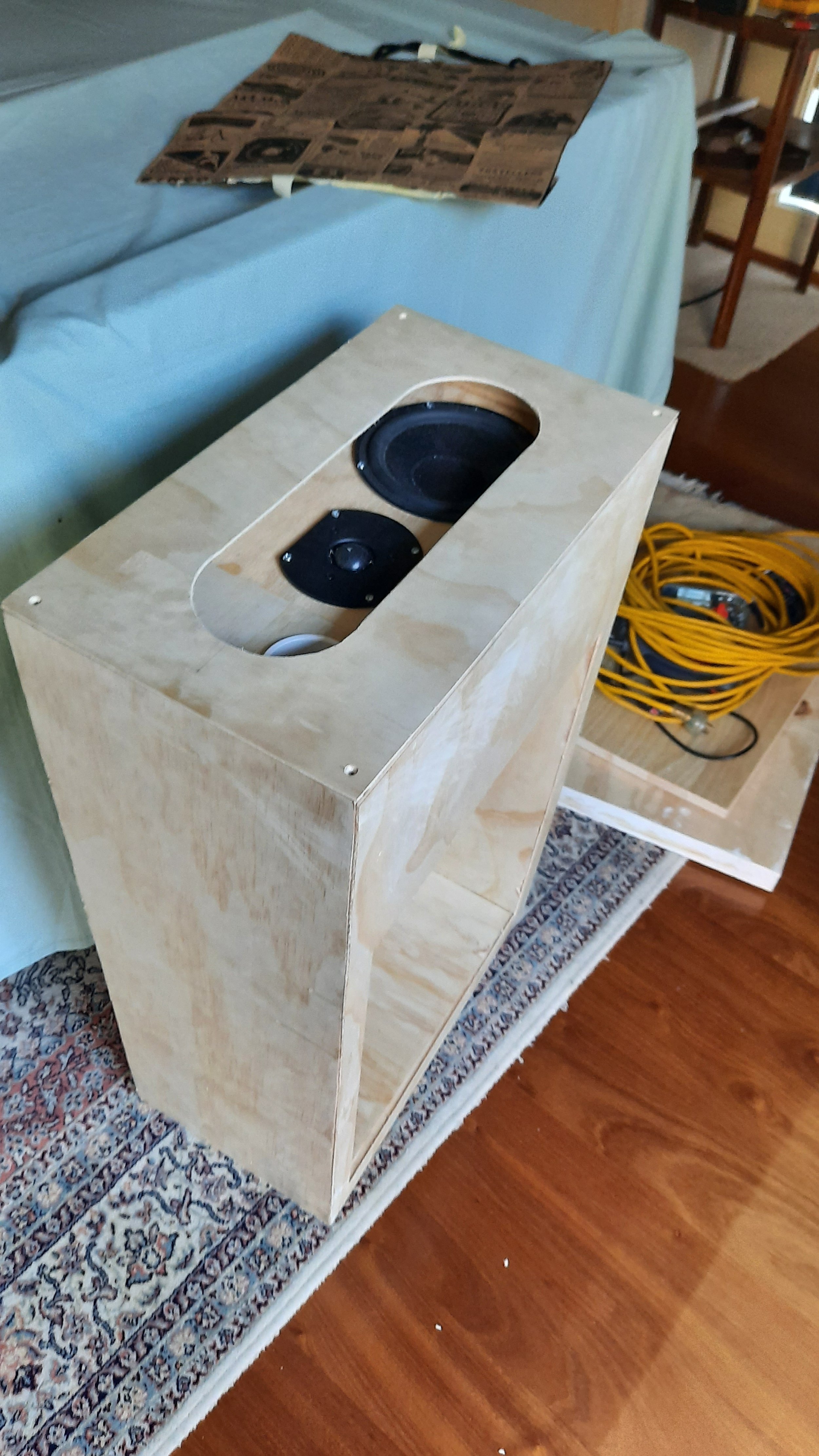
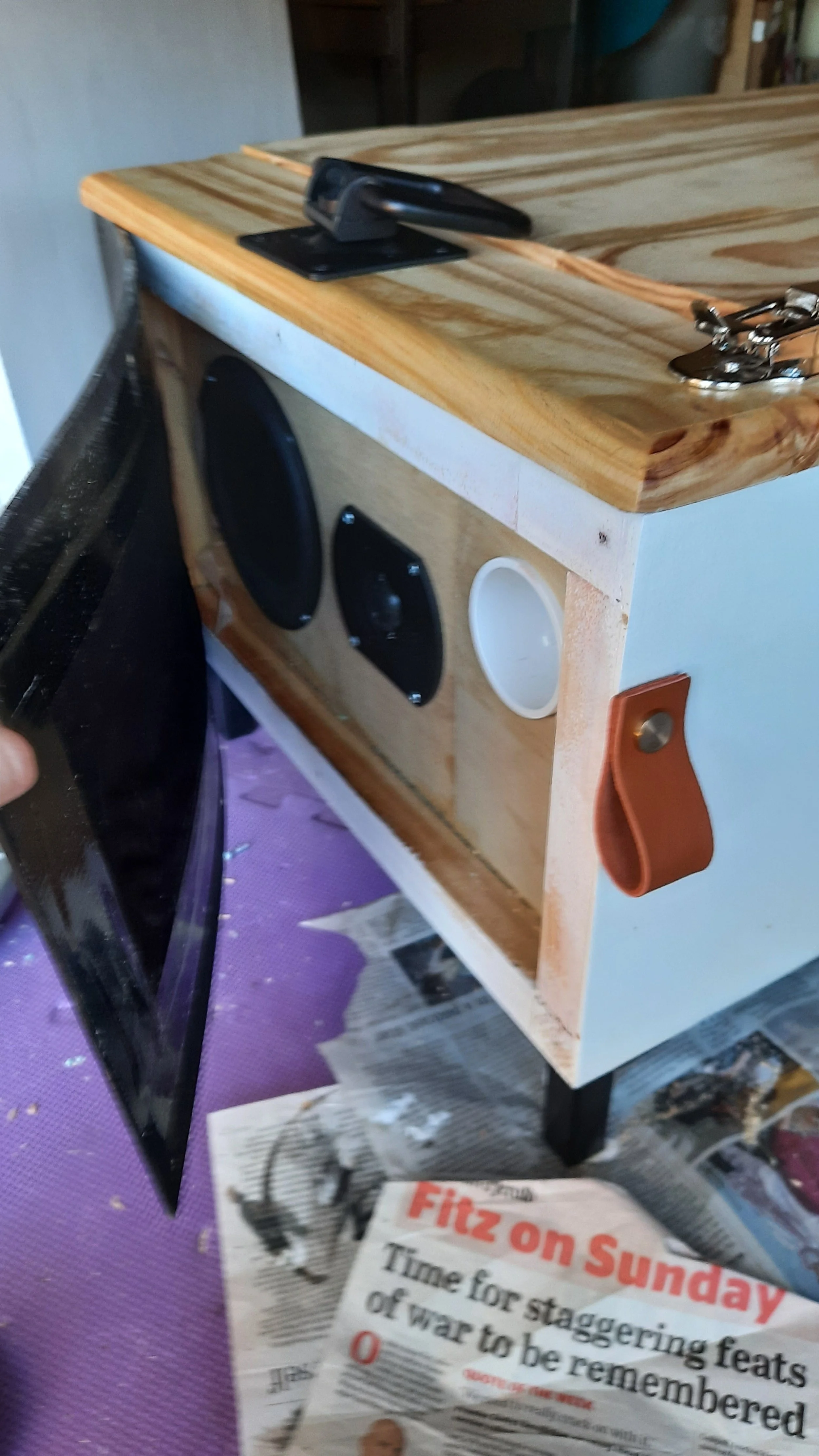
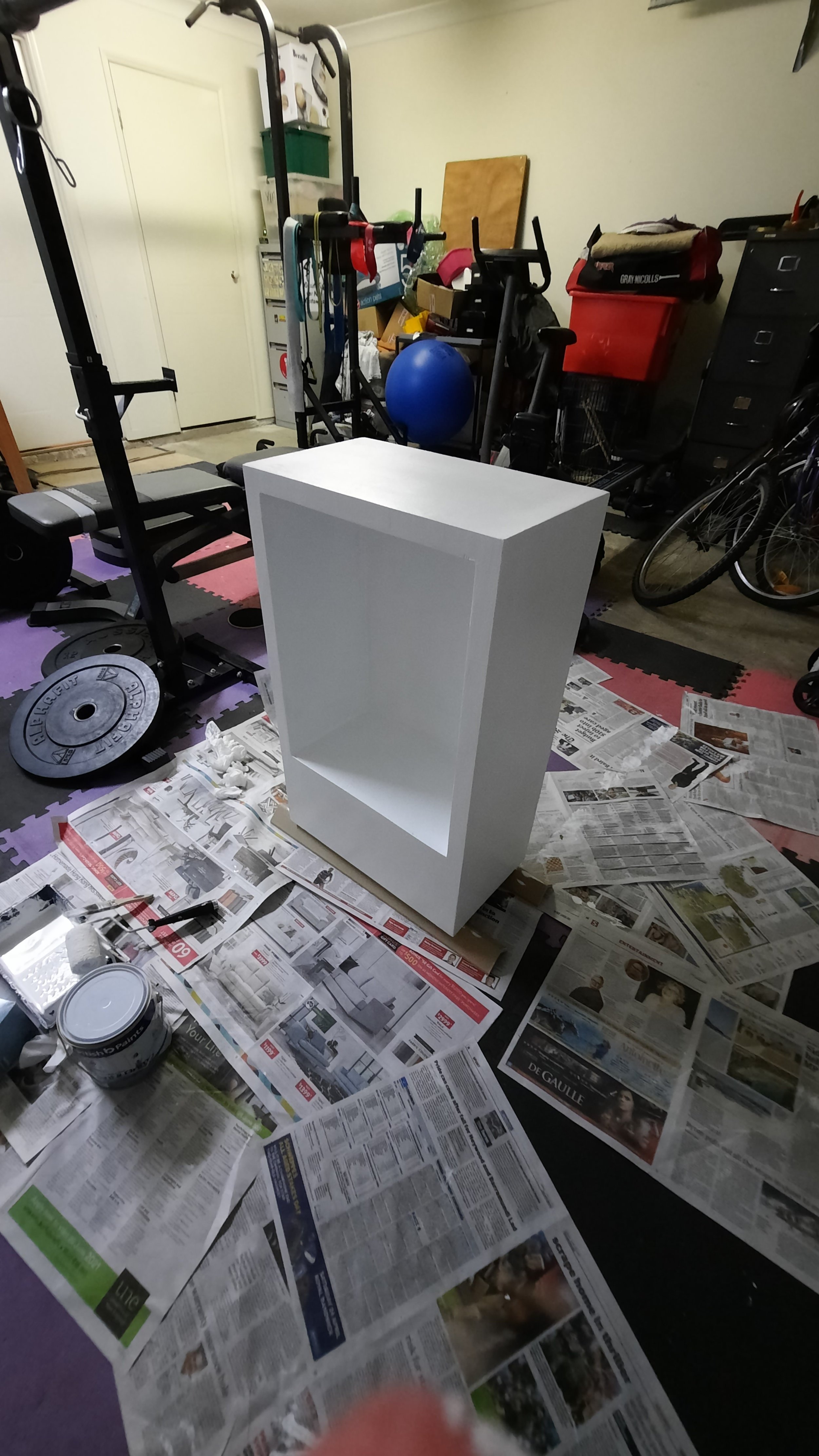

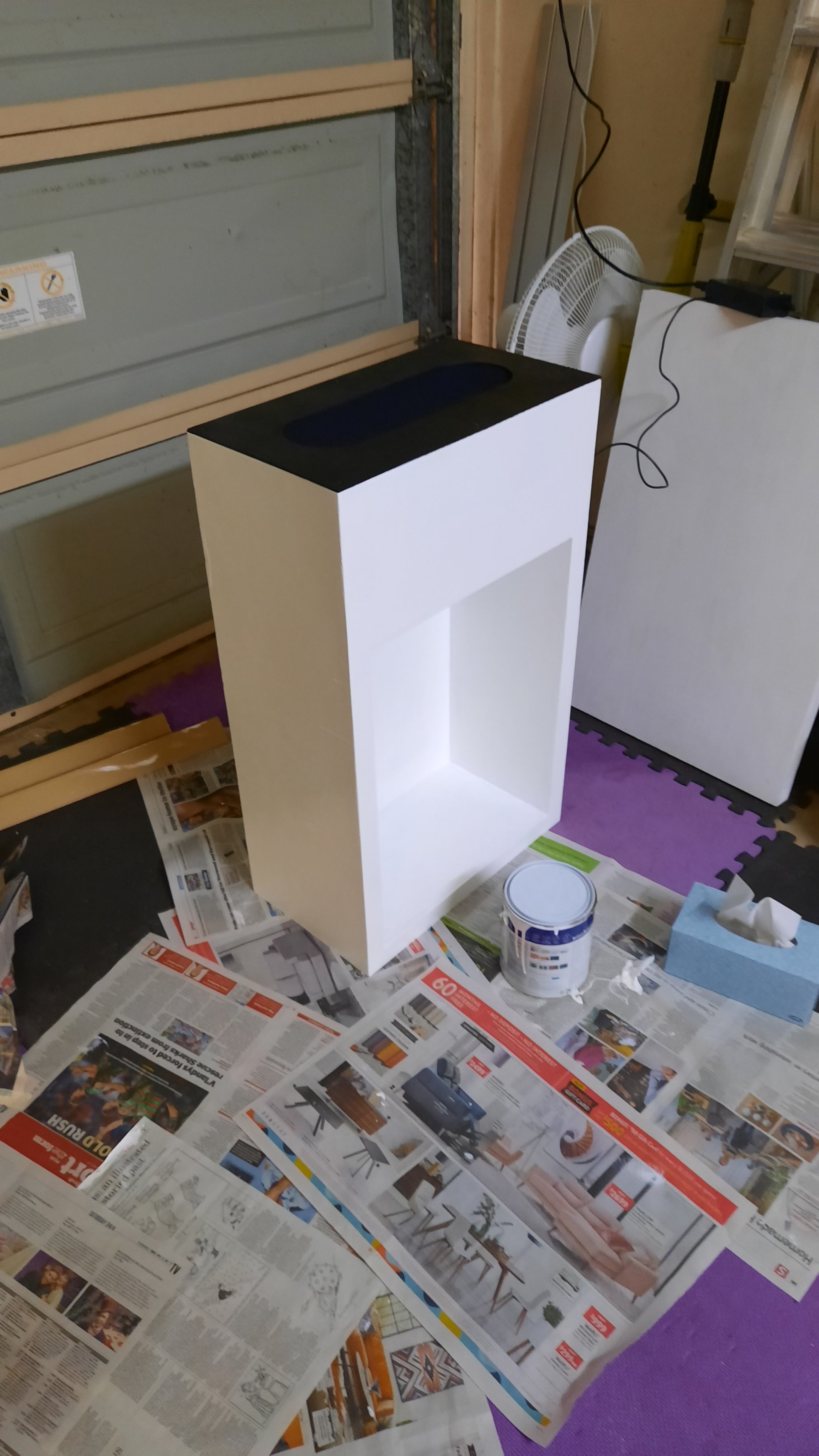
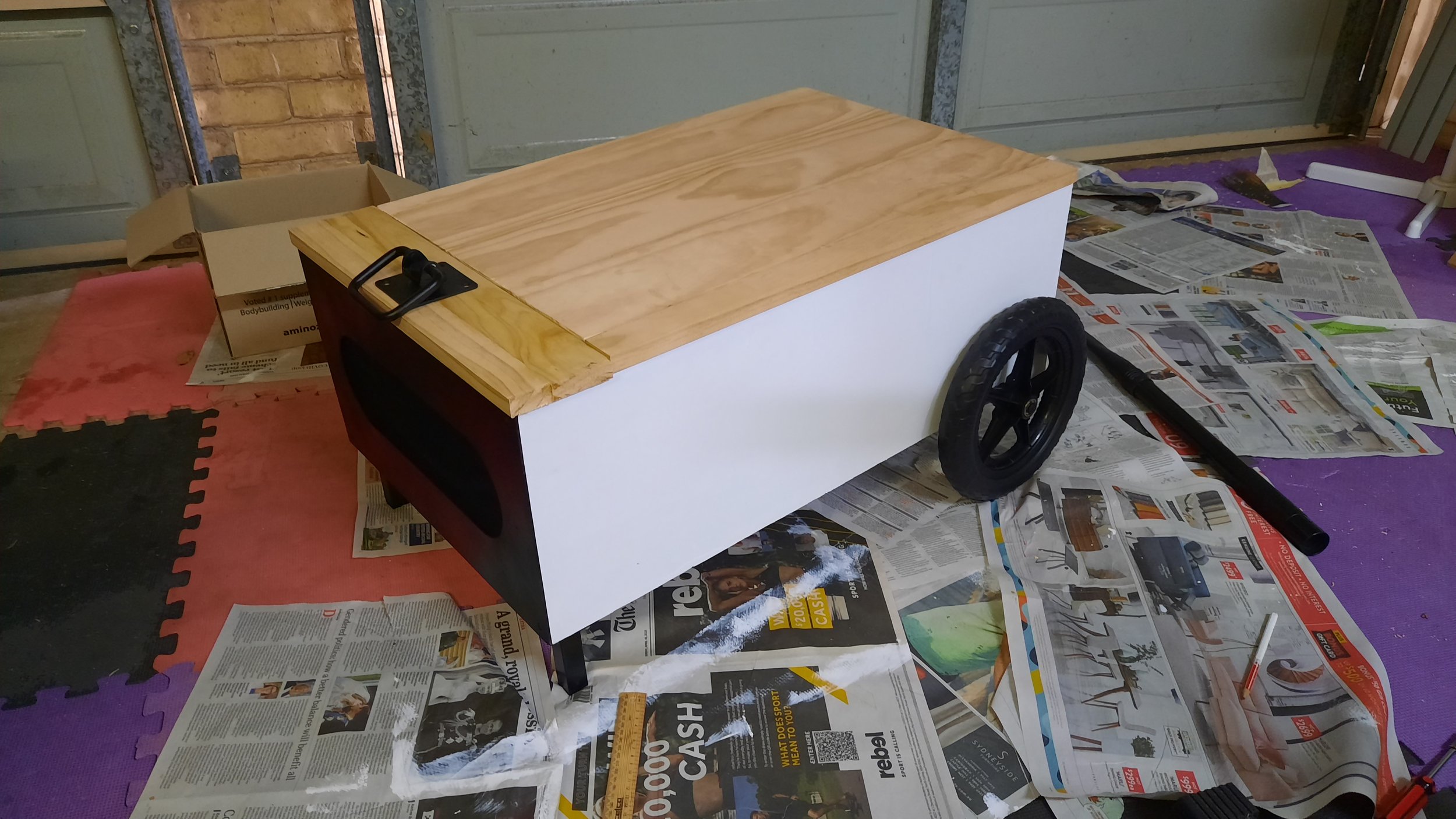
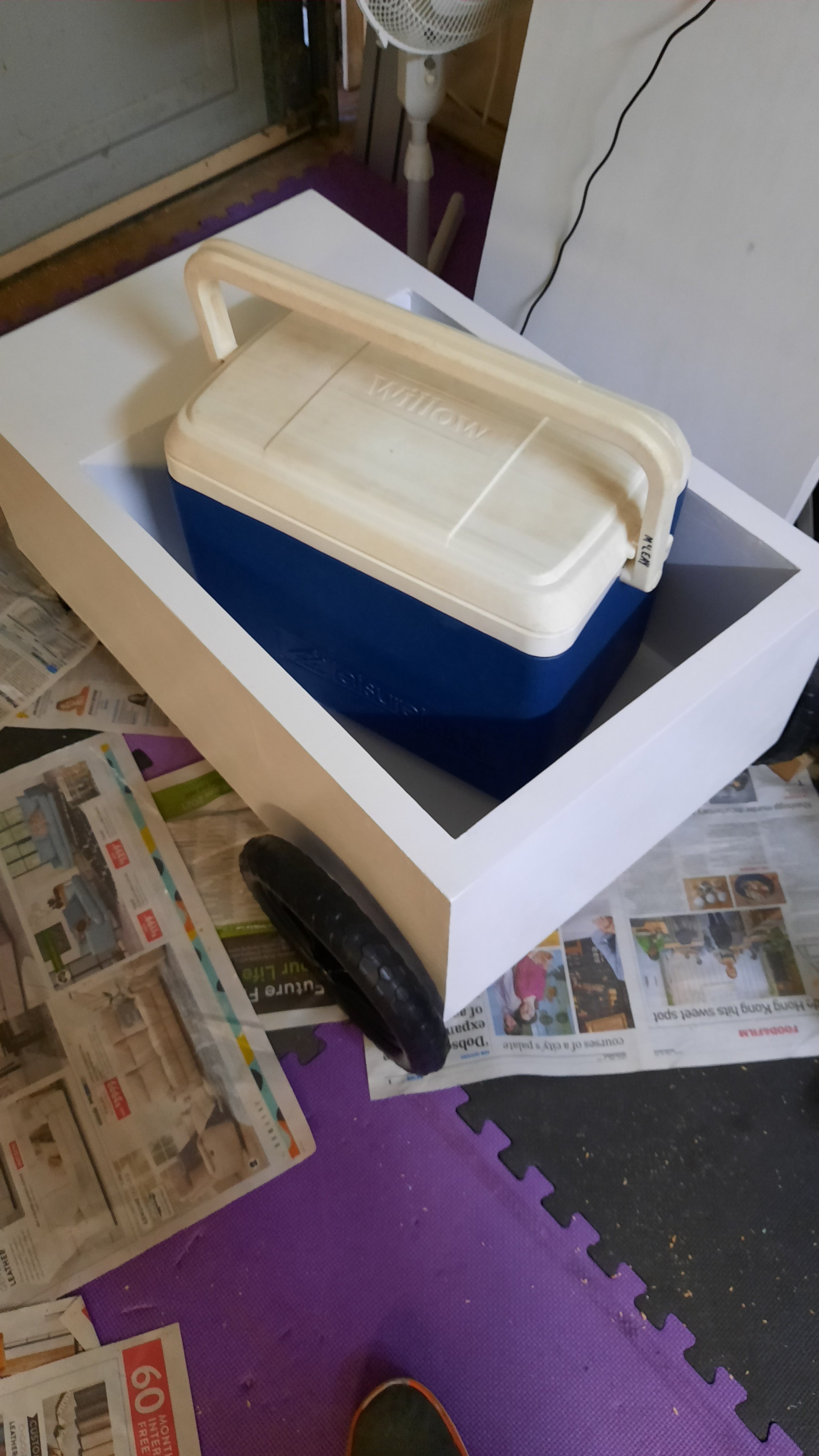
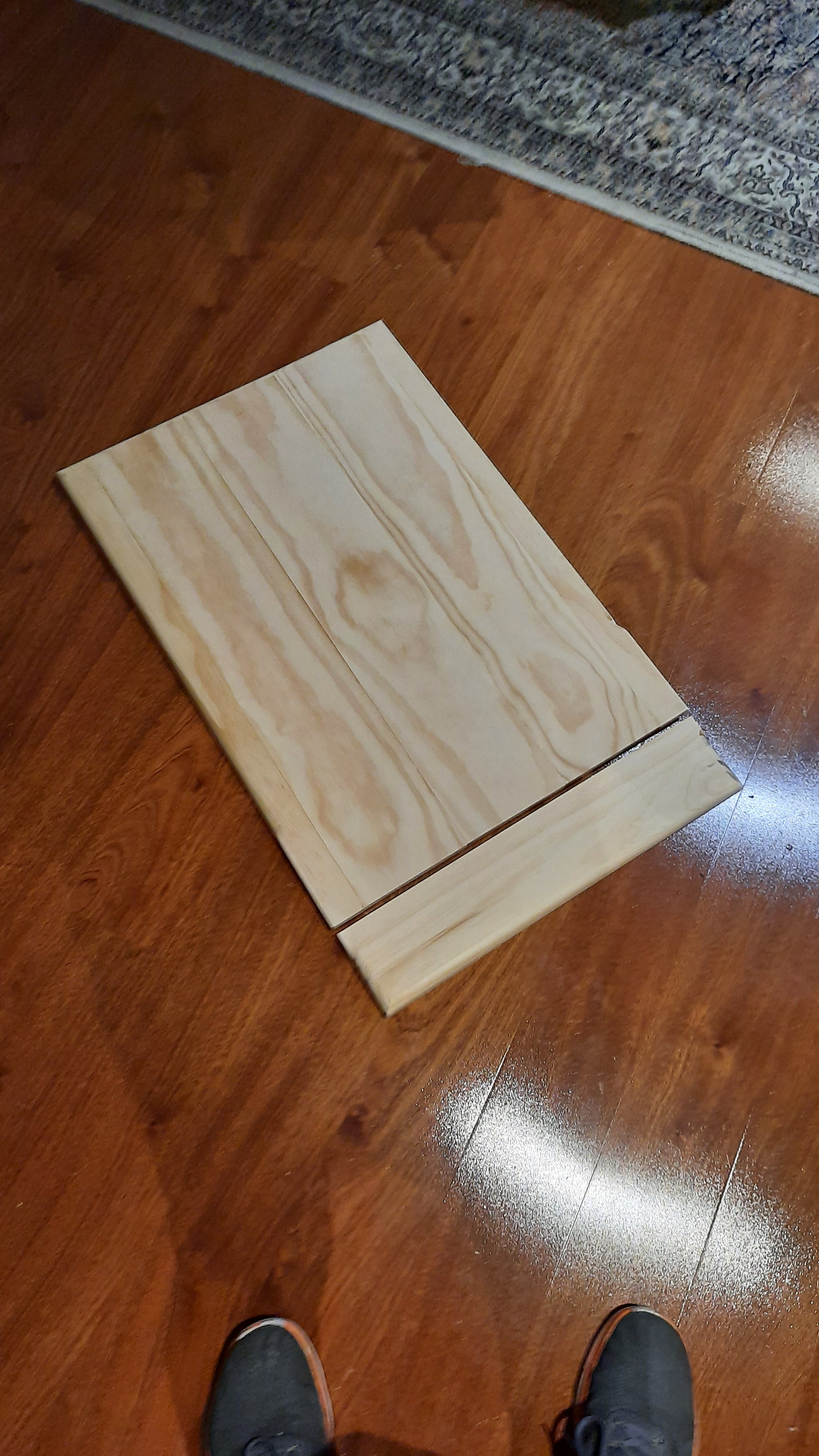
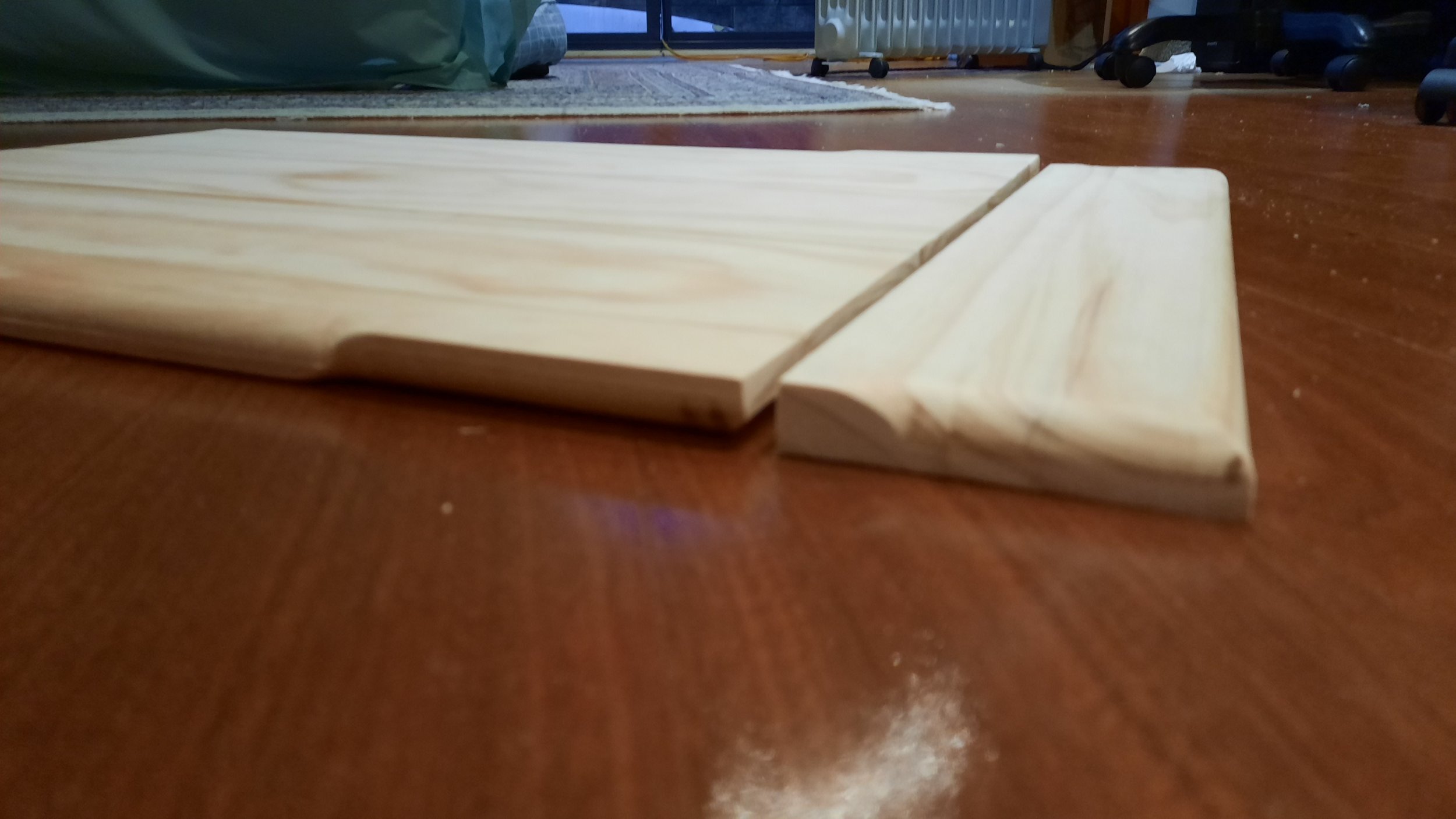
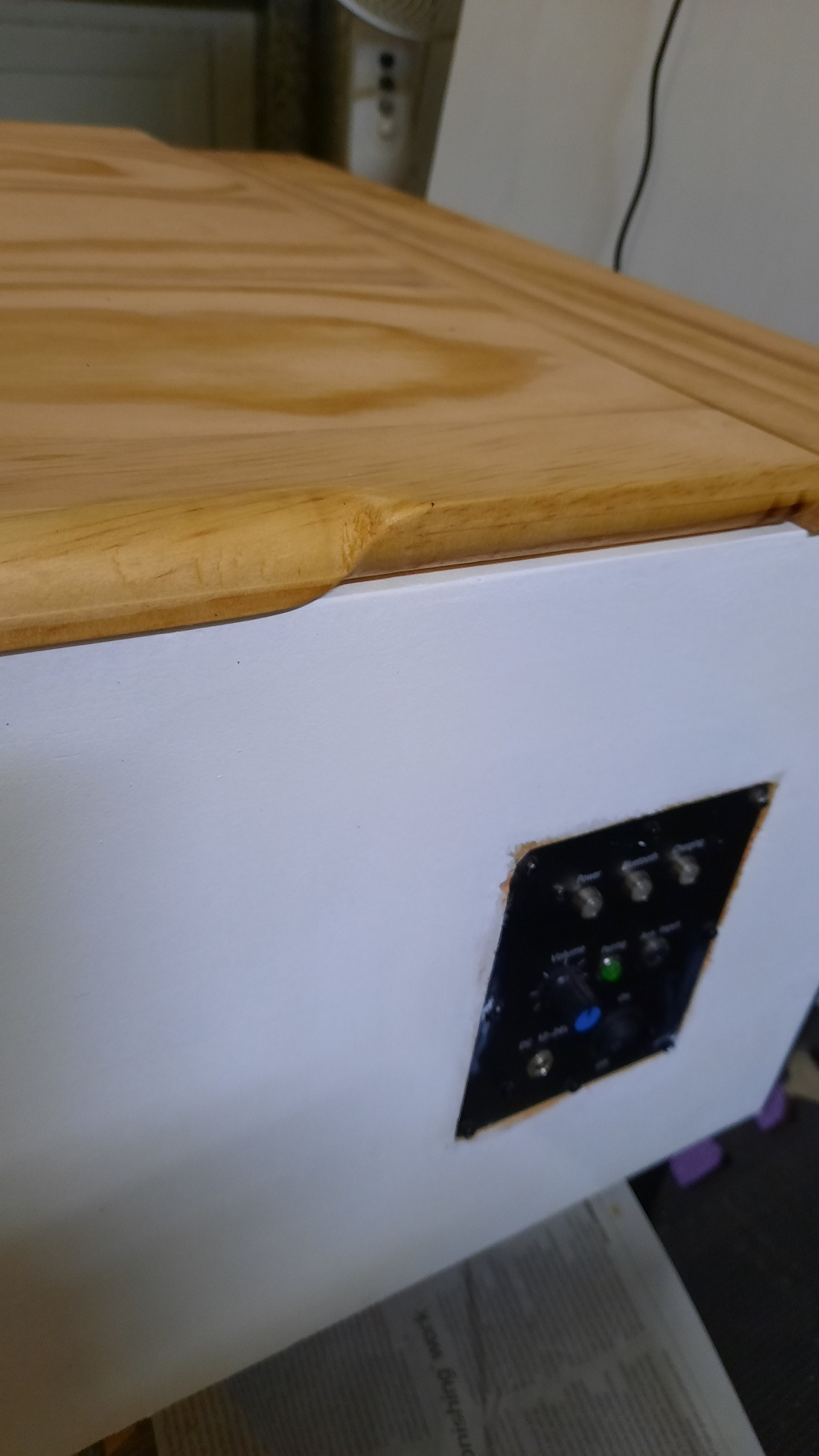
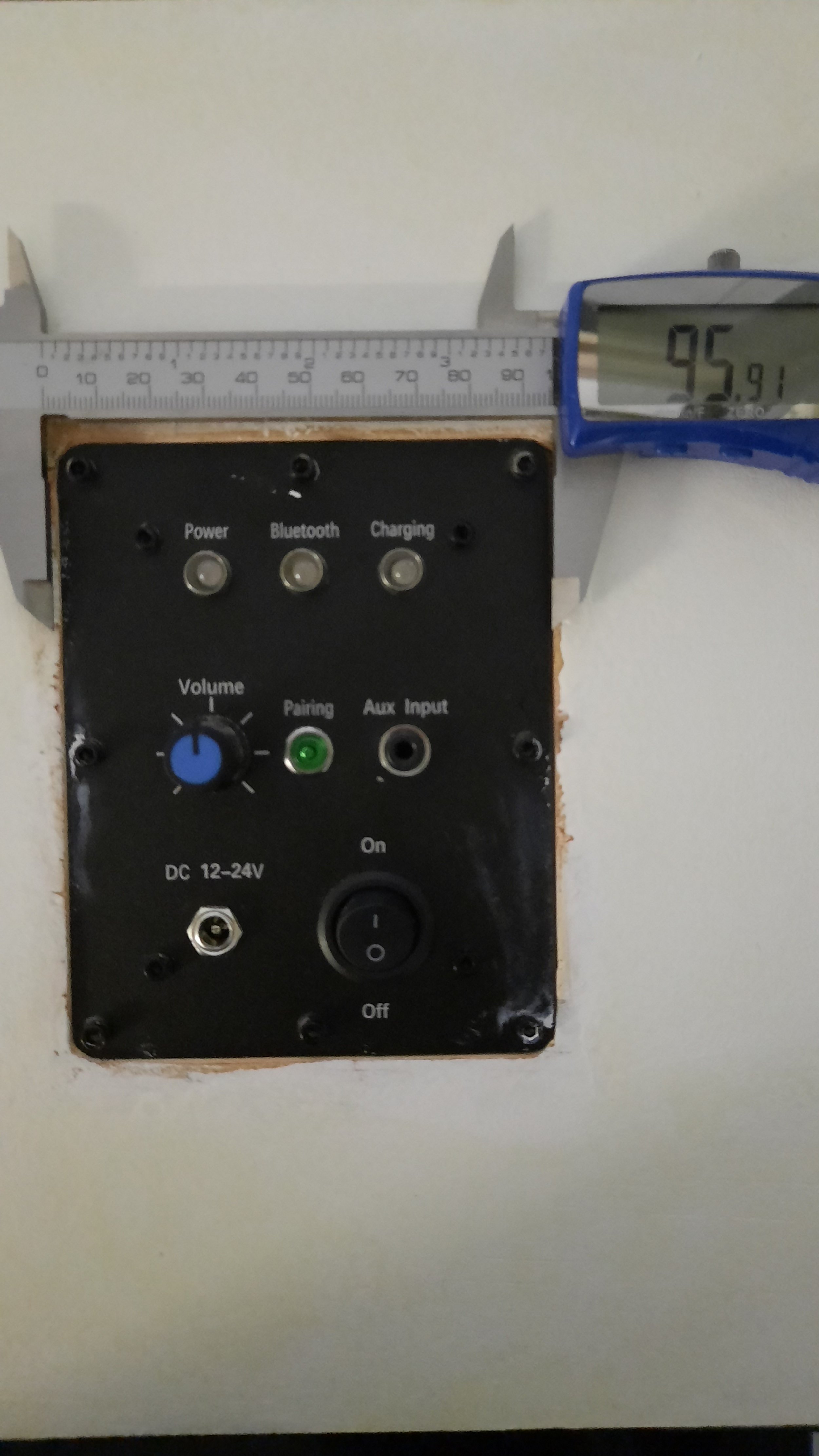
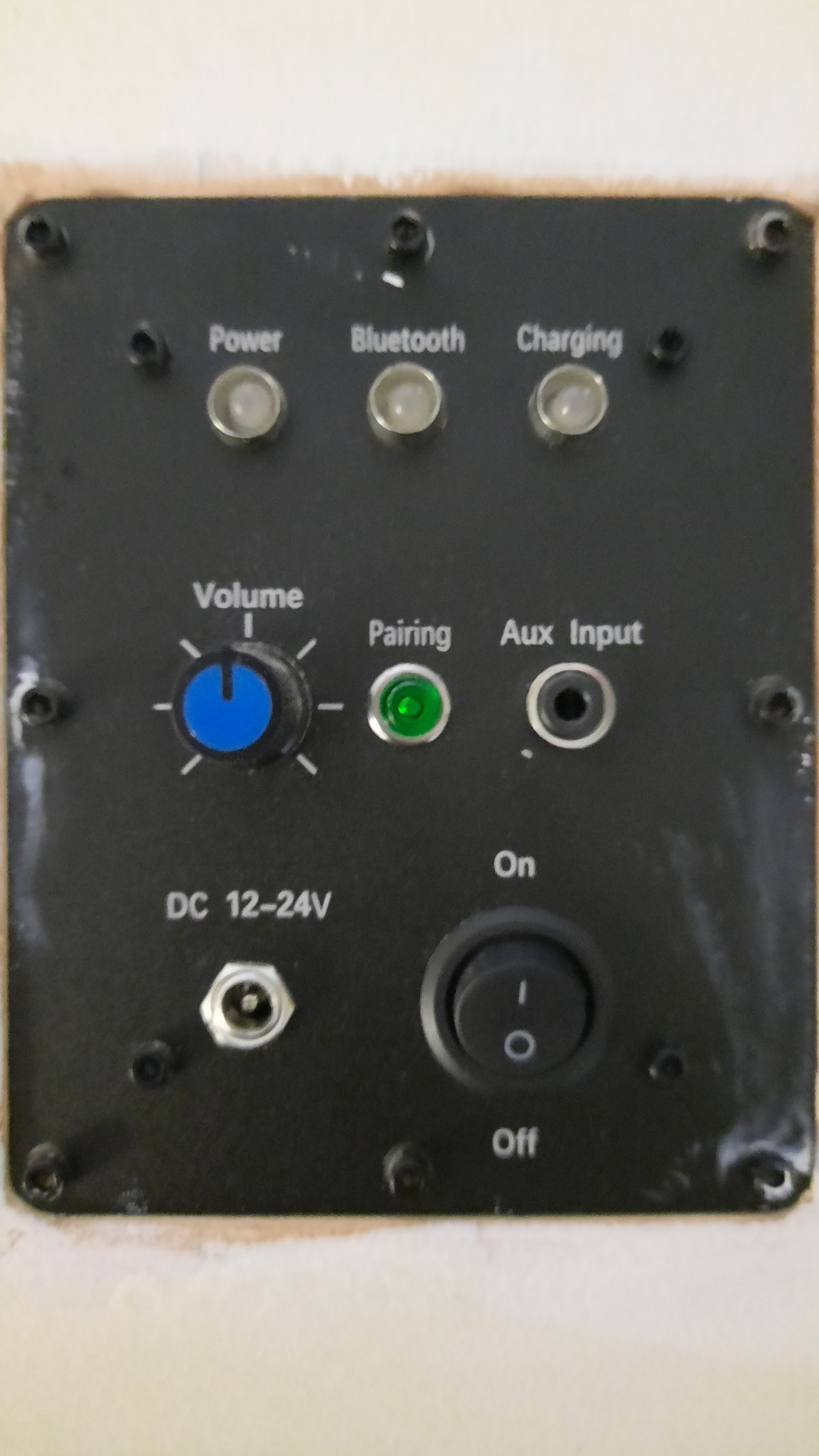
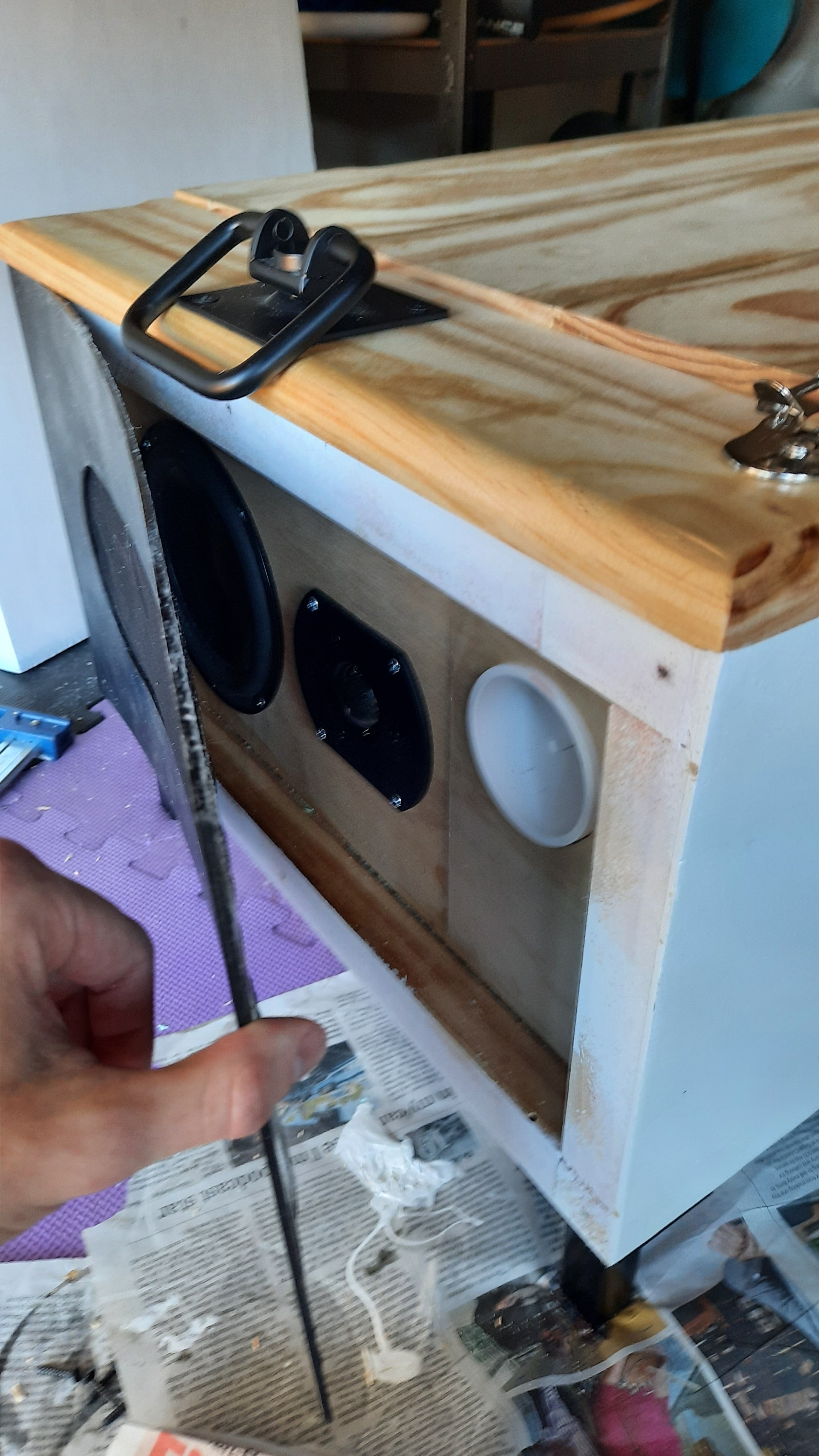
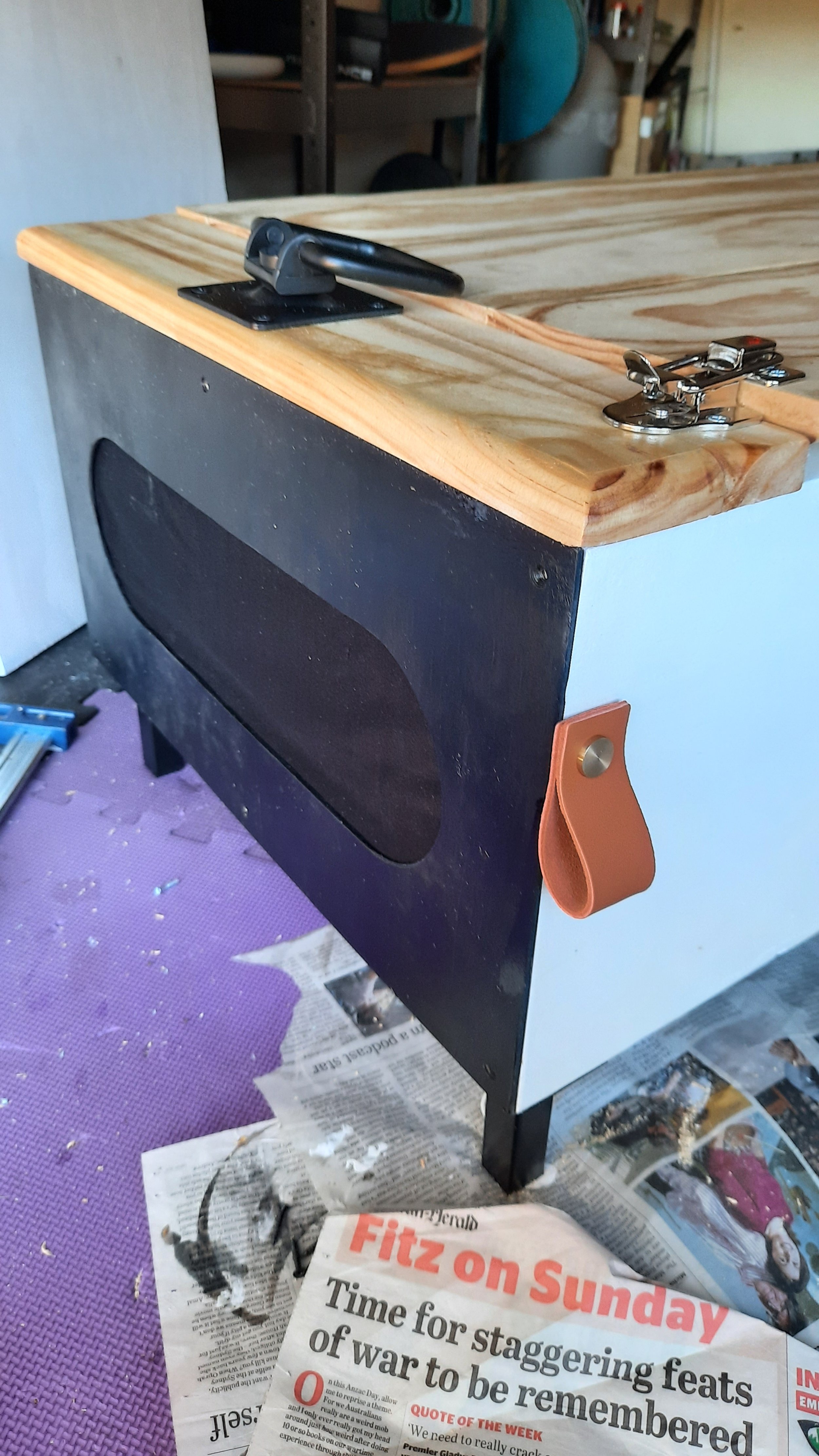
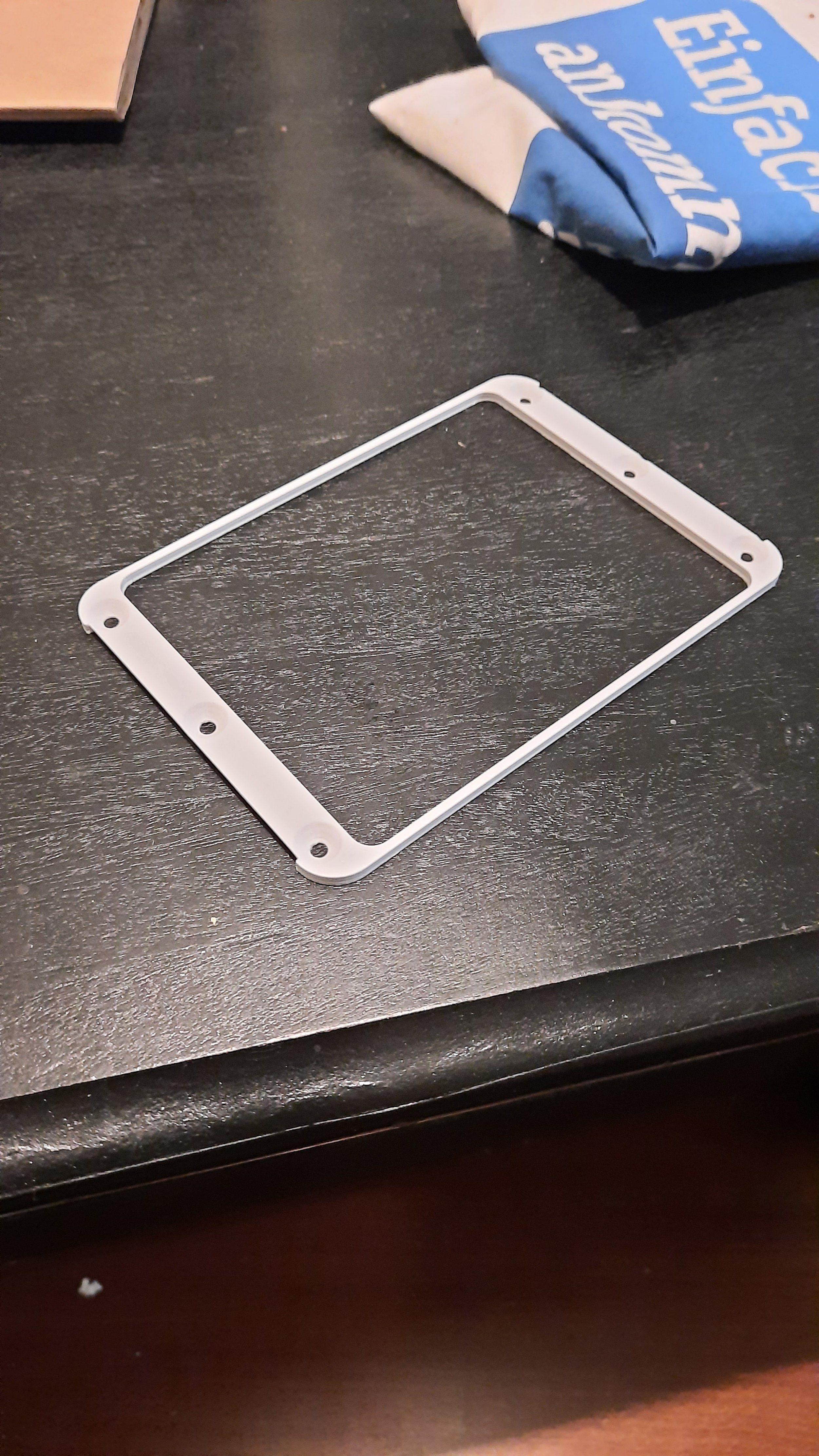
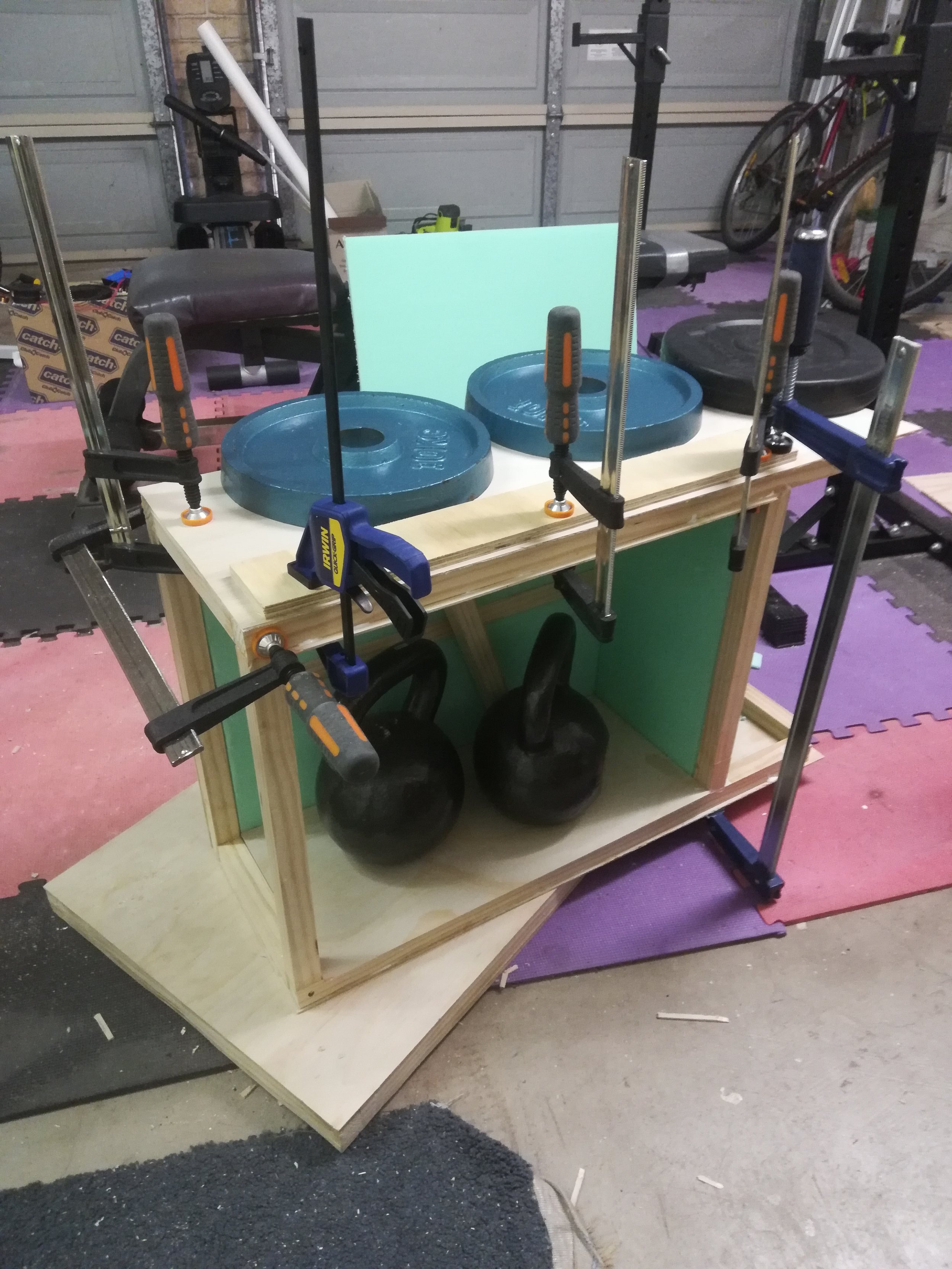
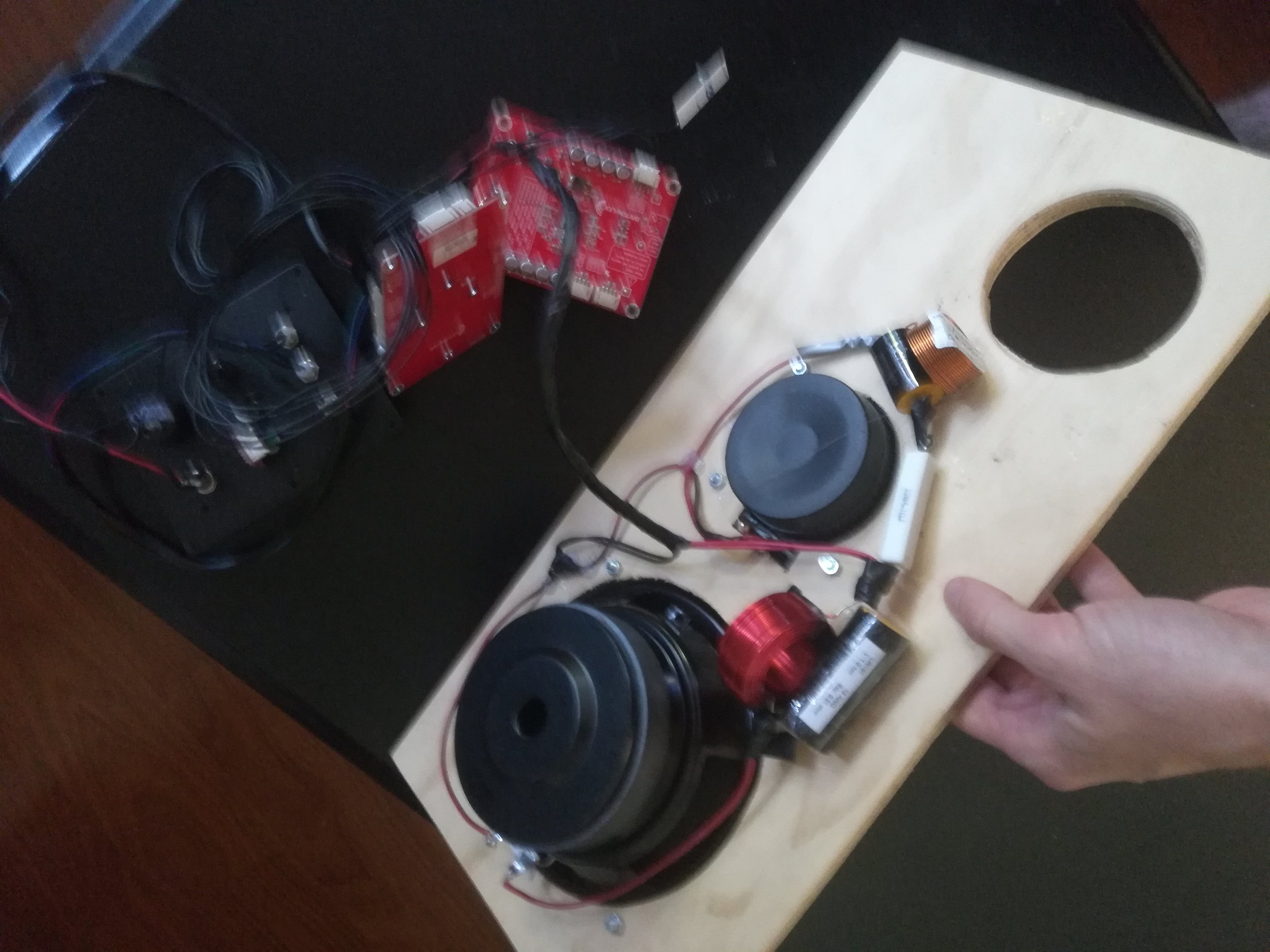
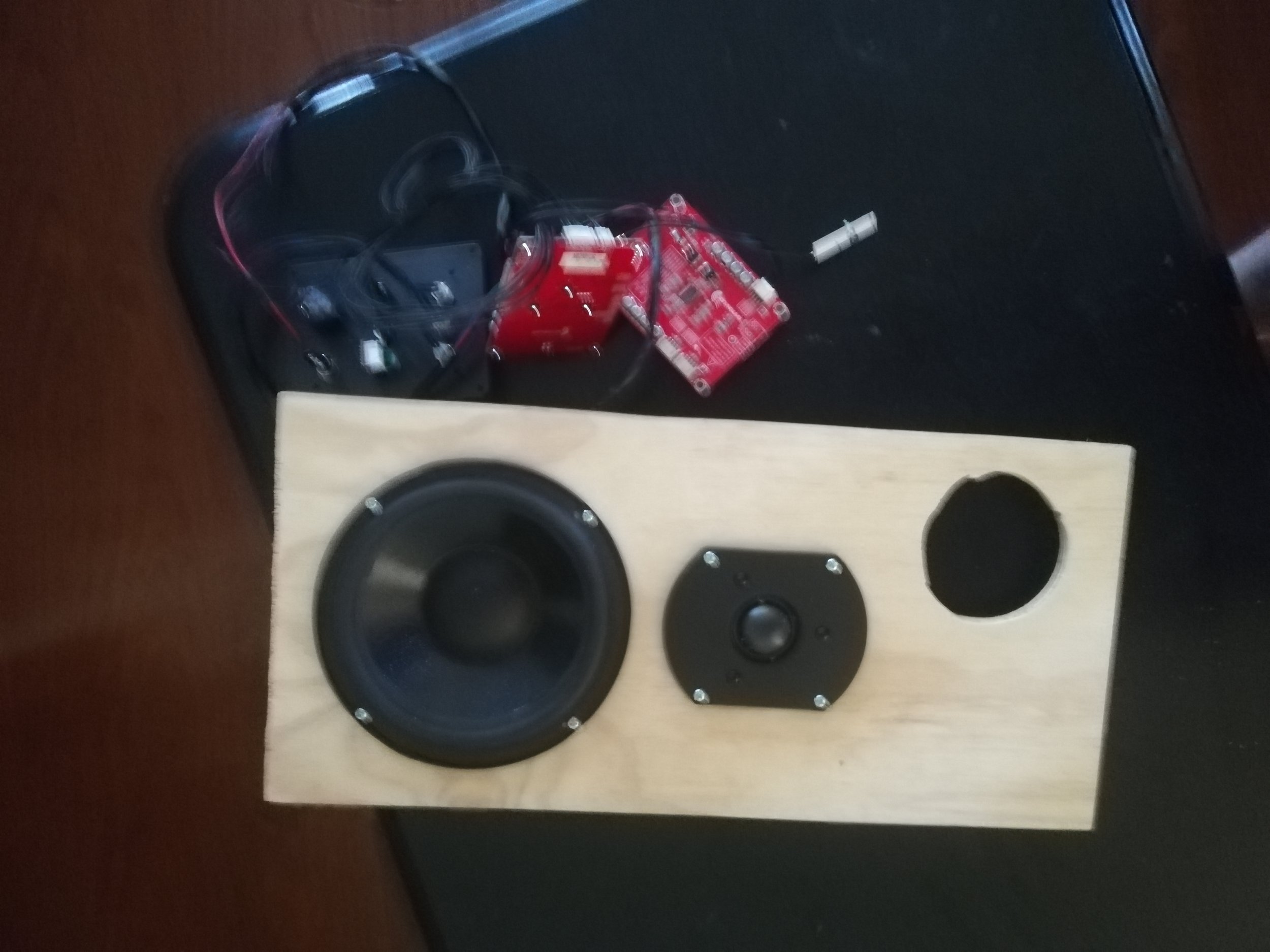
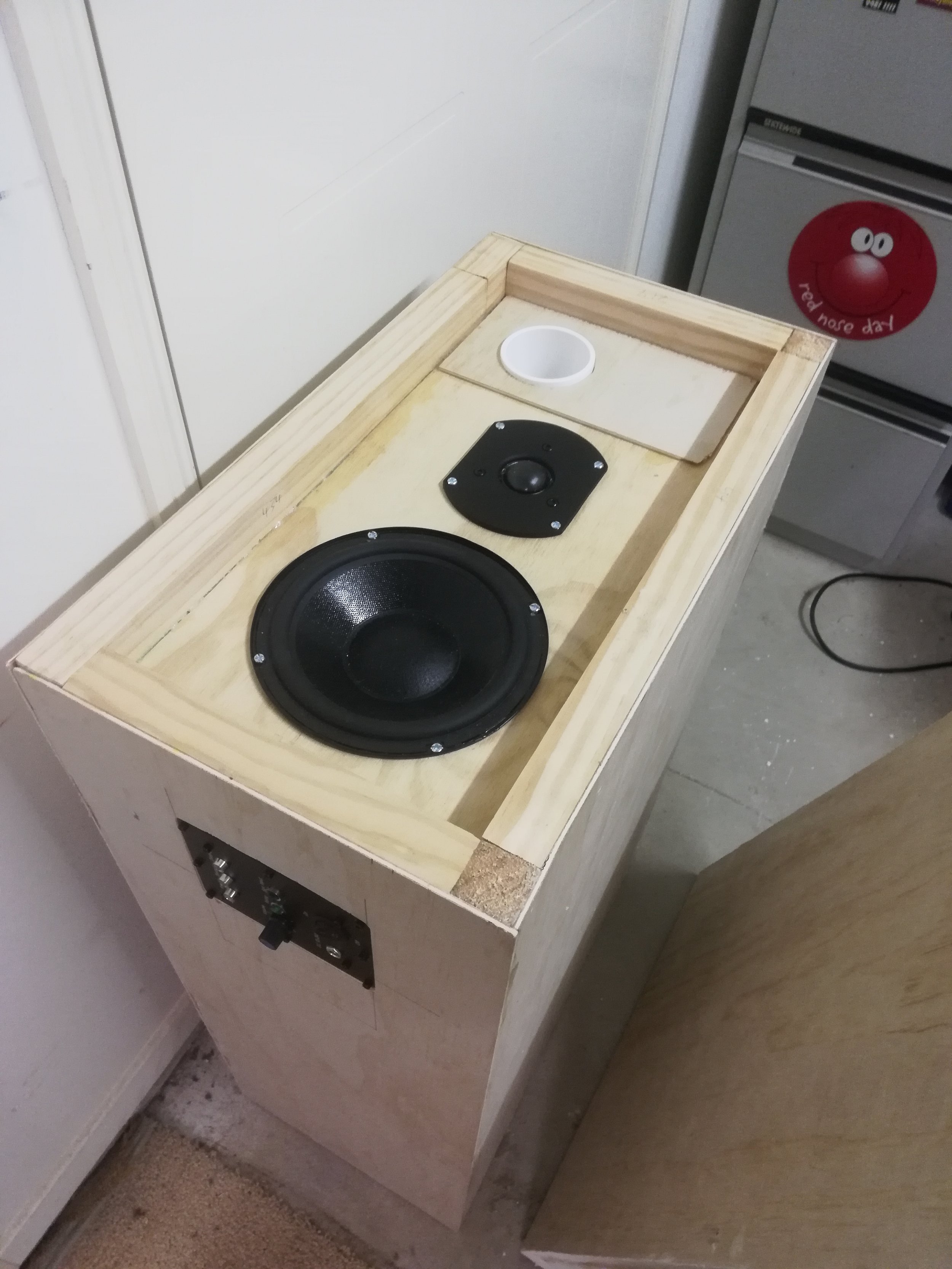
My ultimate personal speaker
Thunderclap
A 500W single-cabinet audio system, restricted to 100W at all times.
I treated myself as a client in this project, and designed it for my ideal listening experience.
In speaker design, there’s a design lense called Hofmann’s Iron Law, where out of the three parameters, you pay choose two:
Bass Extension
Encloser Space Efficiency
Output
Despite it’s large size, the main sacrifice here was output. This was ideal, as it would be far too much anyway.
With 7 drivers, user-friendly equalizer, and a lighting-on-black box aesthetic, this speaker produces thunder, crisp, clear and thumping.
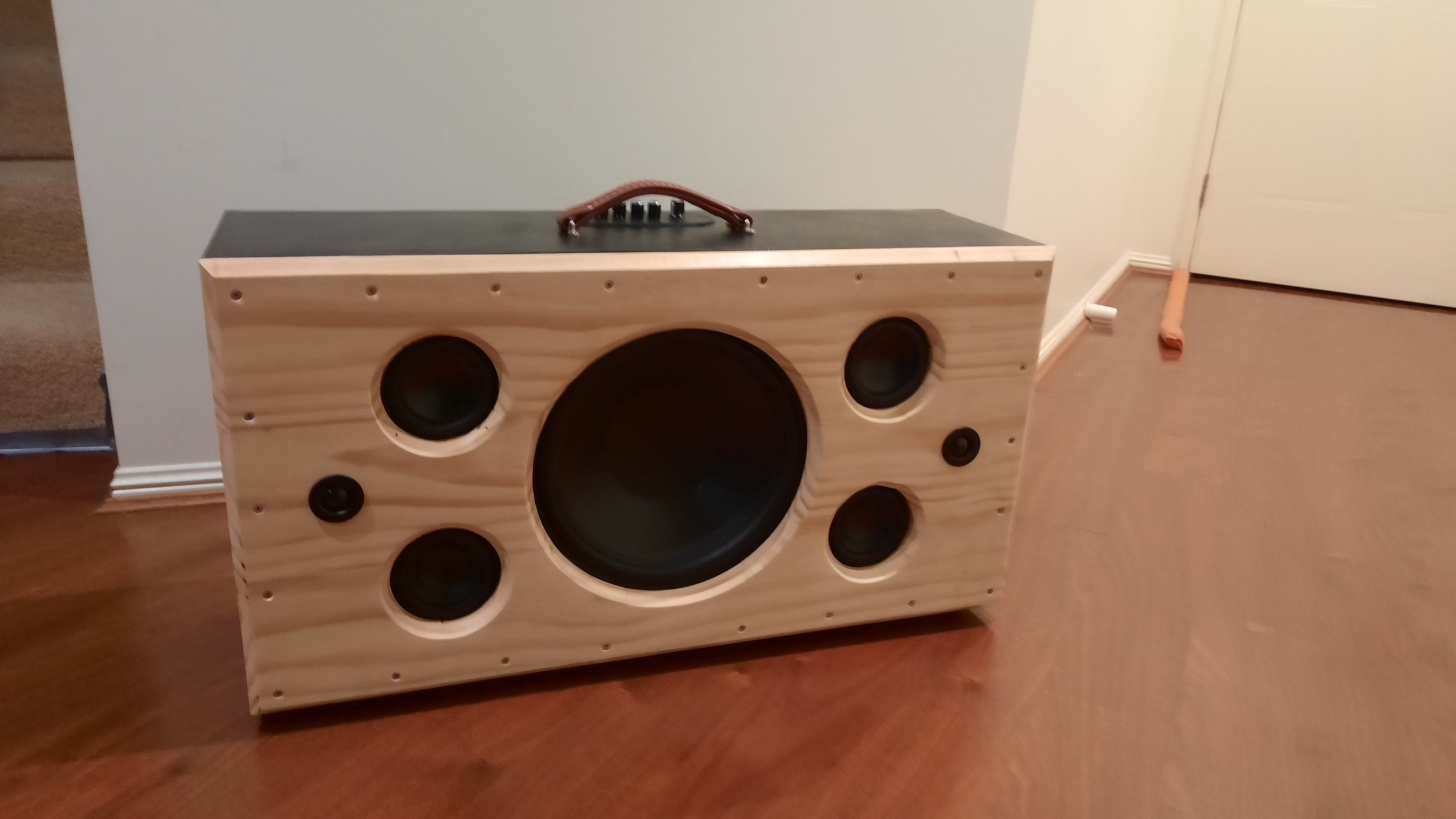
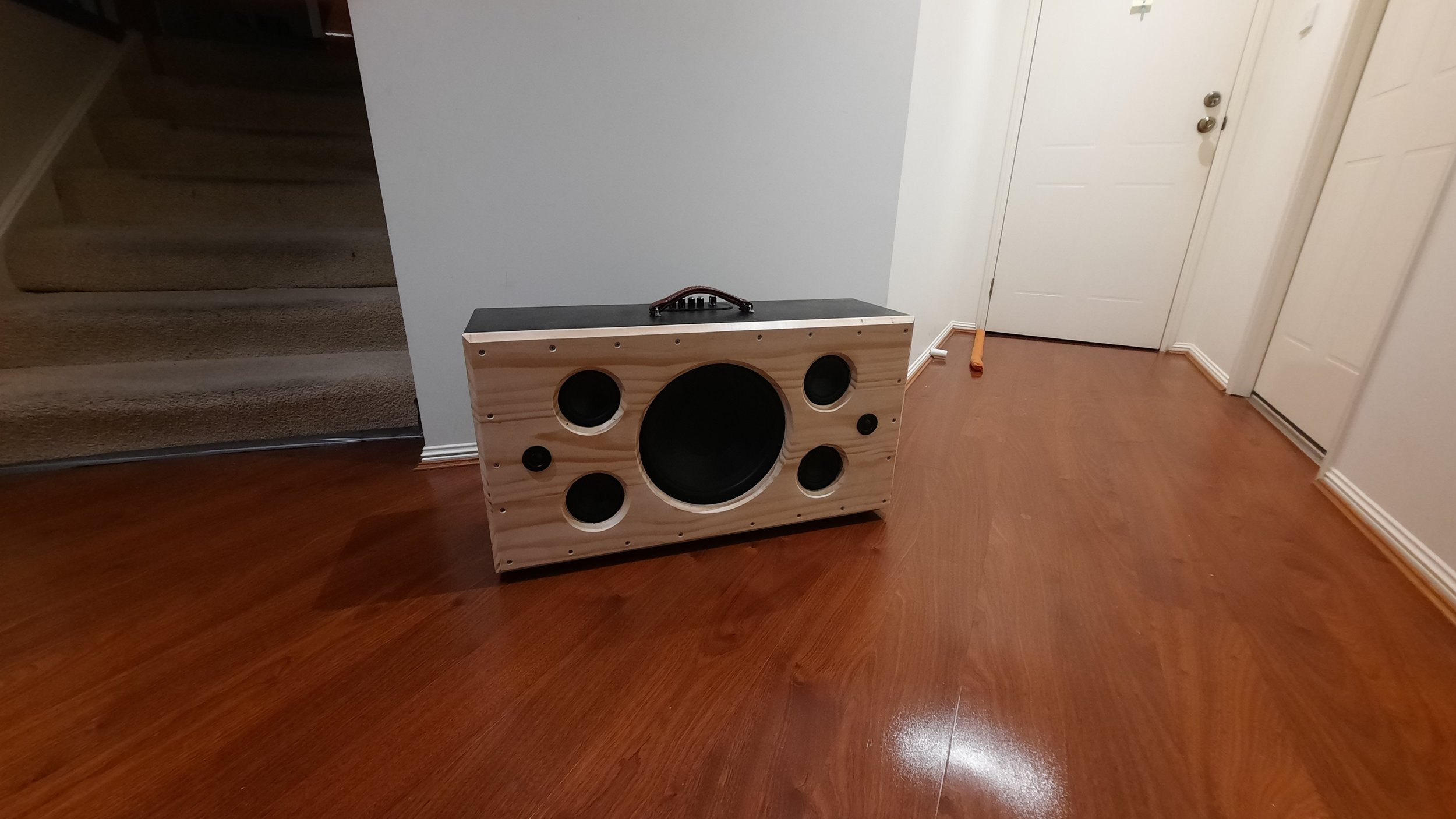
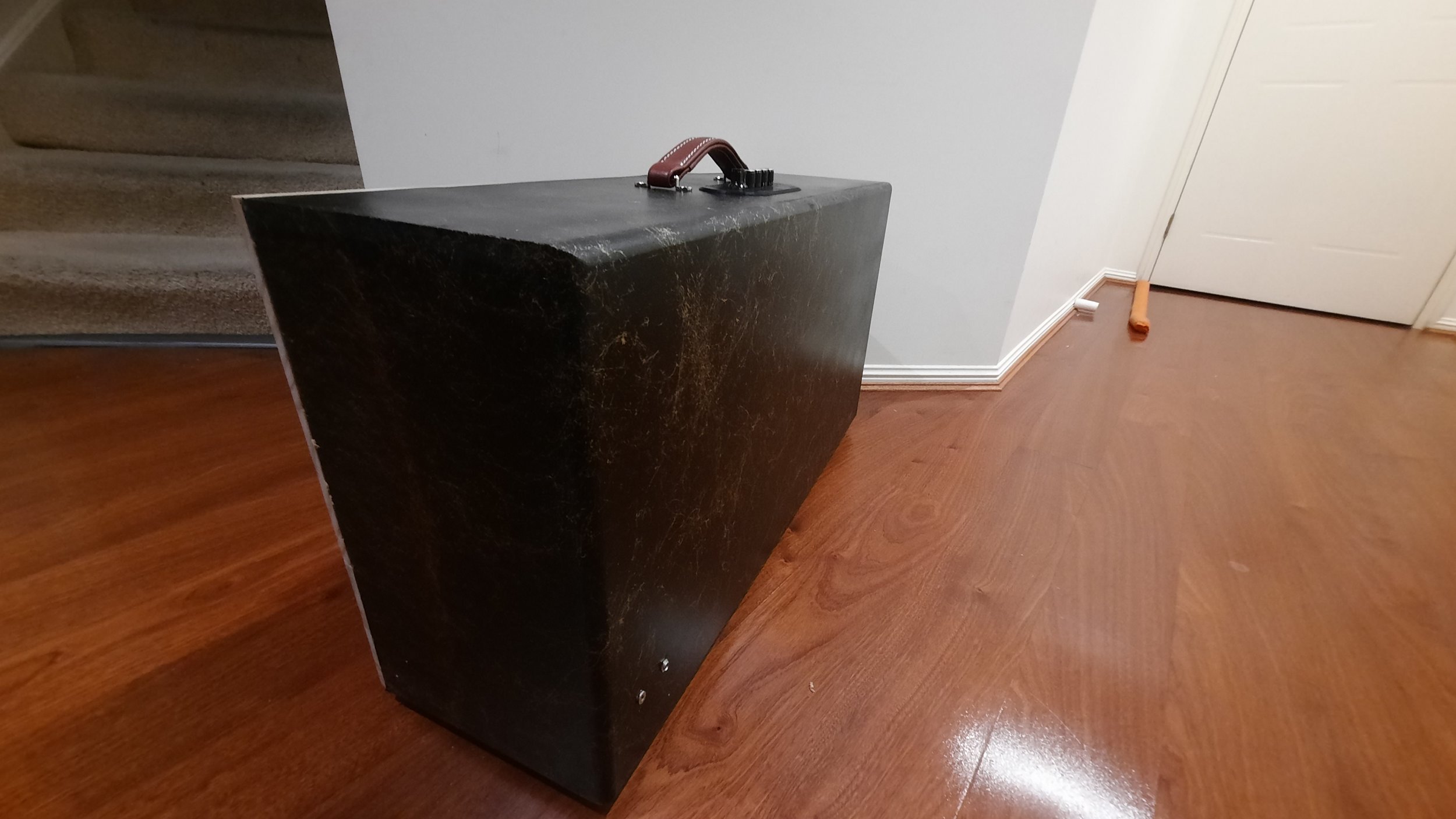
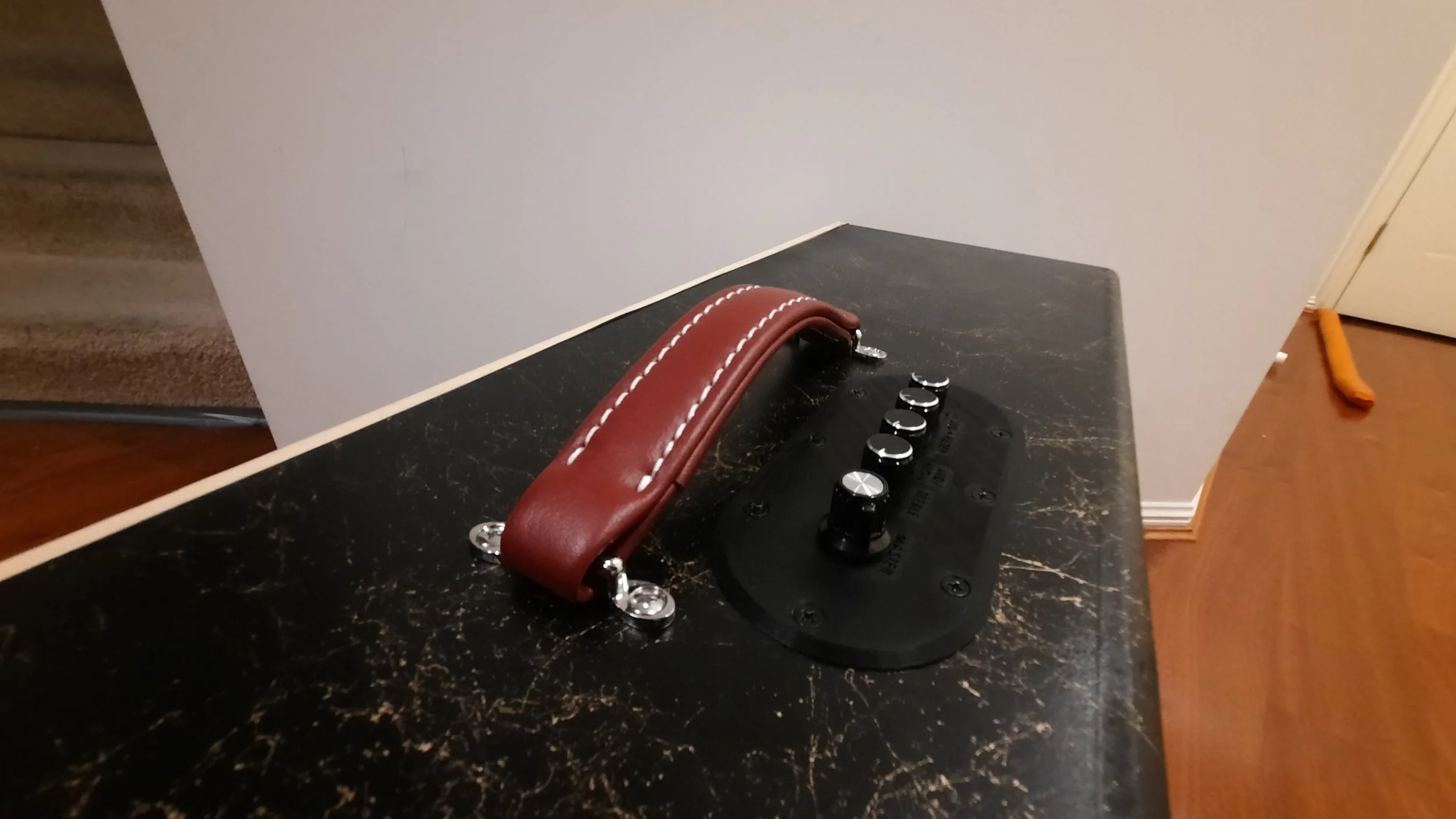
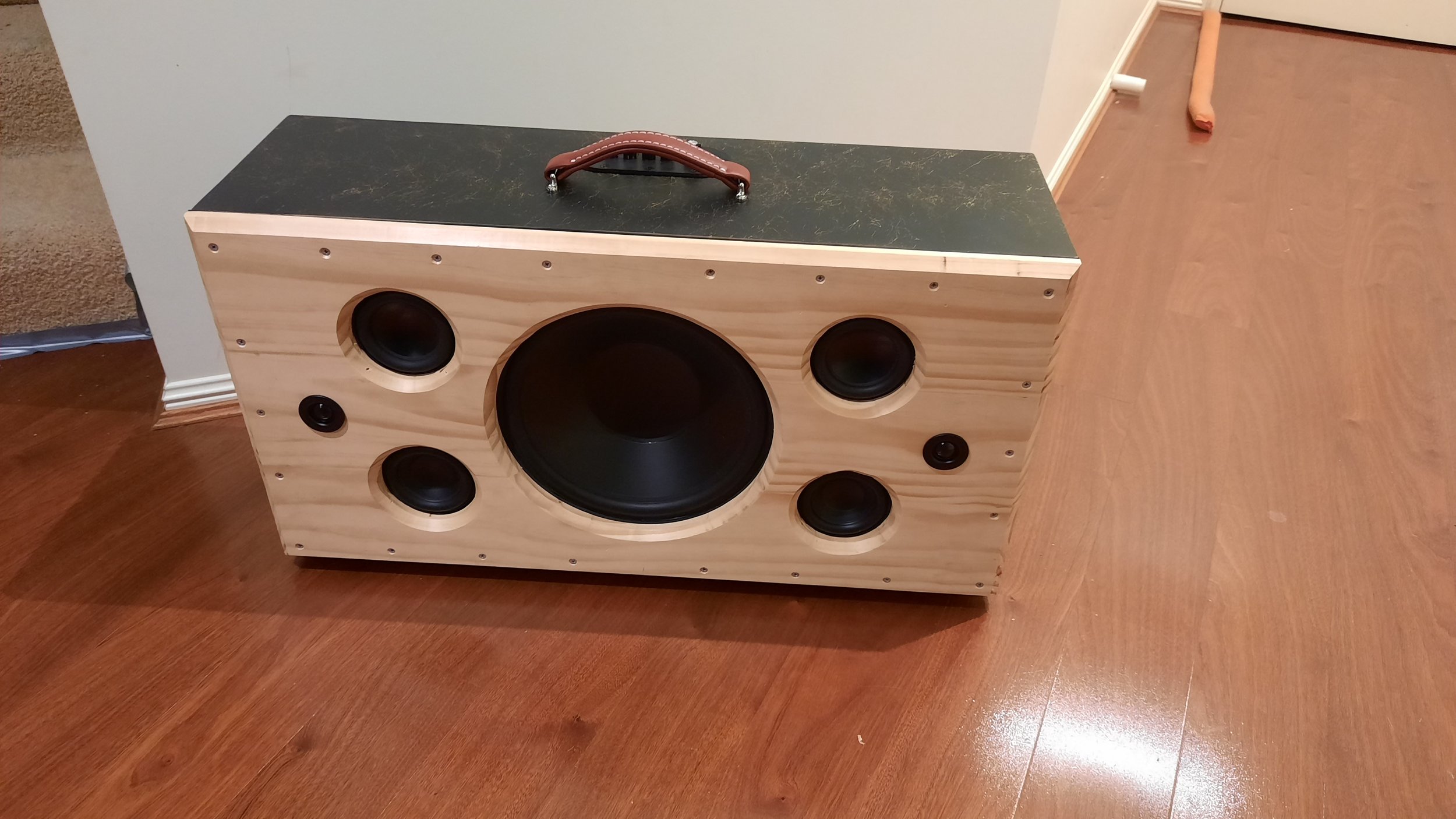
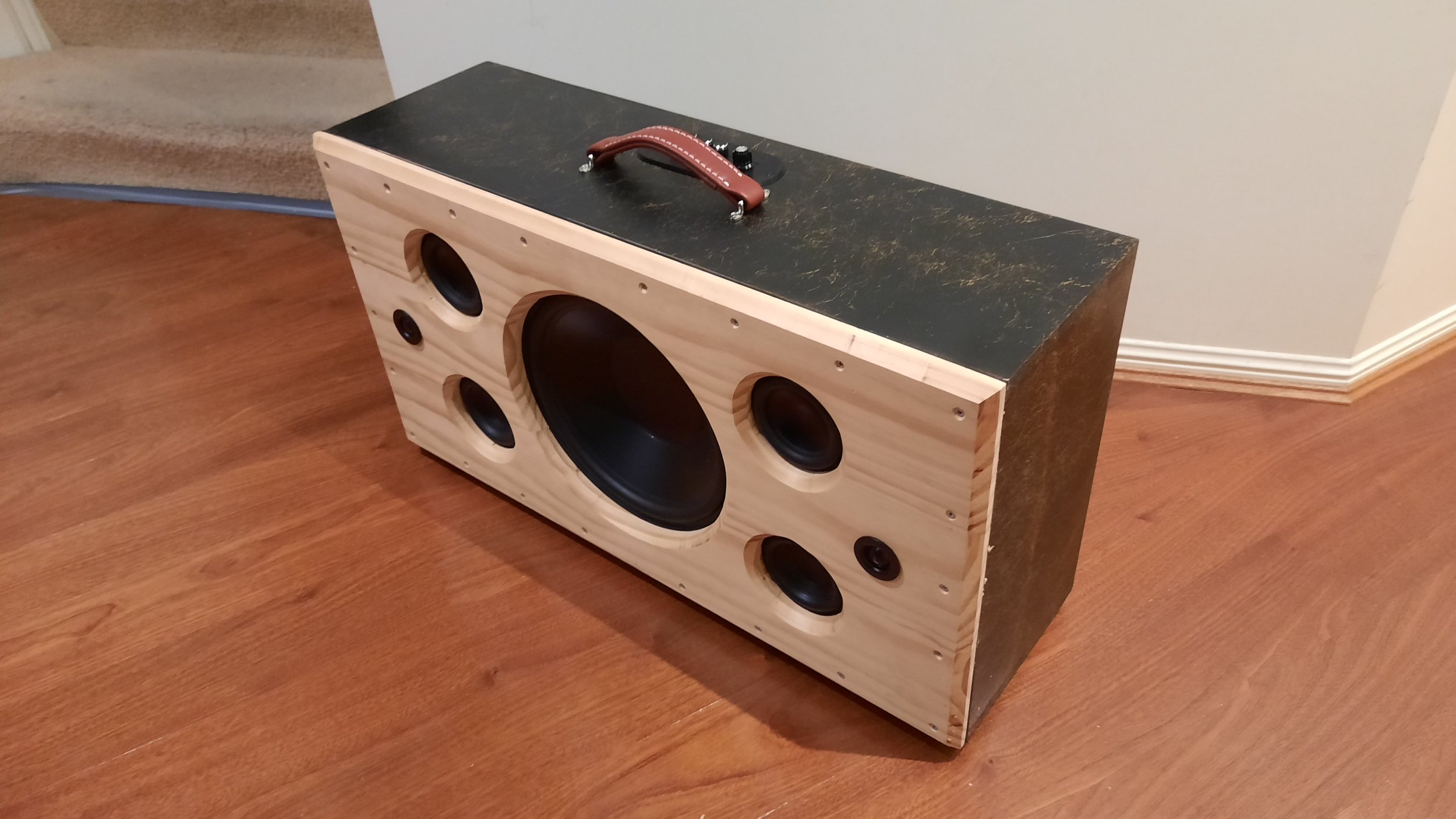
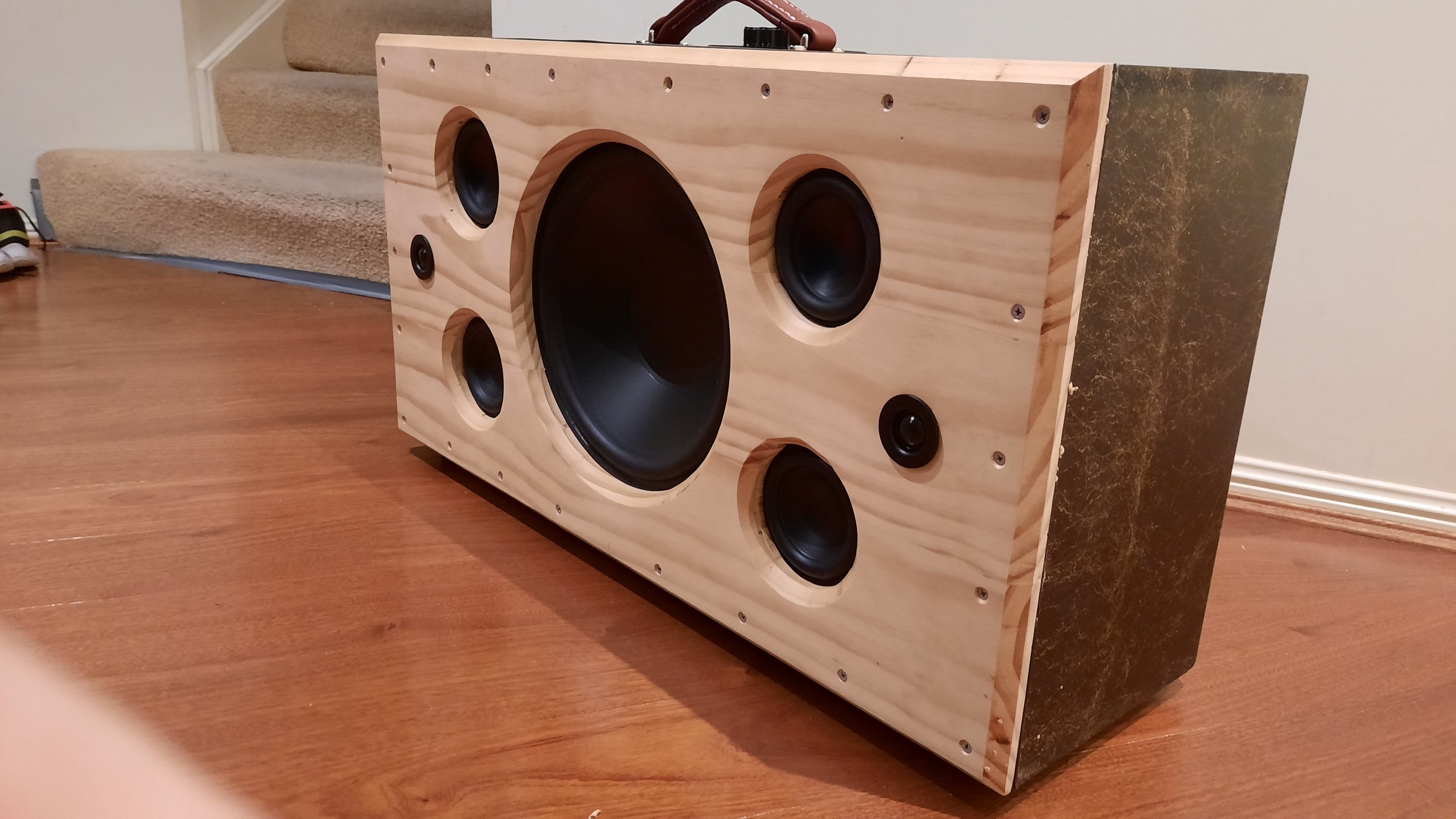
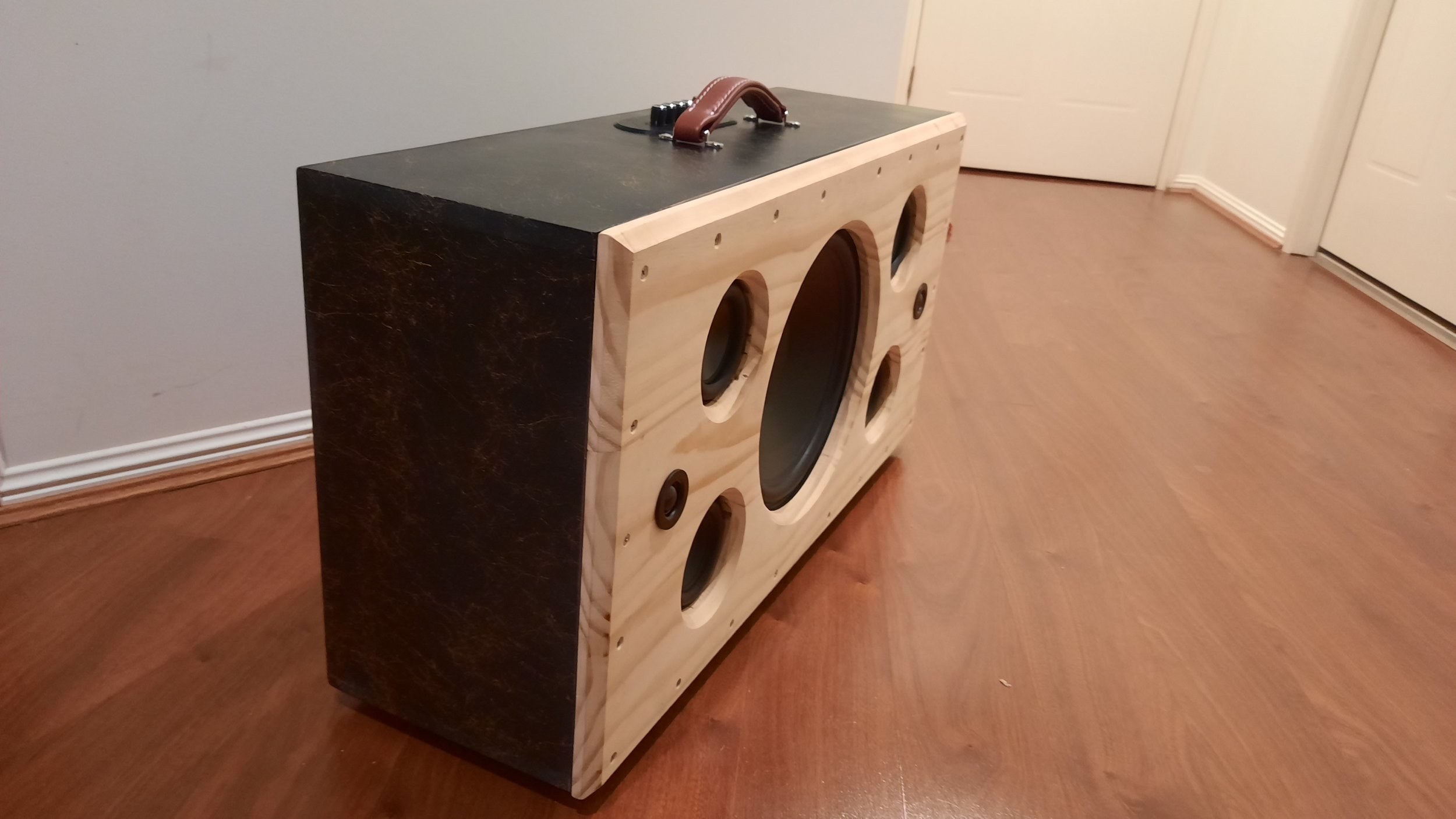
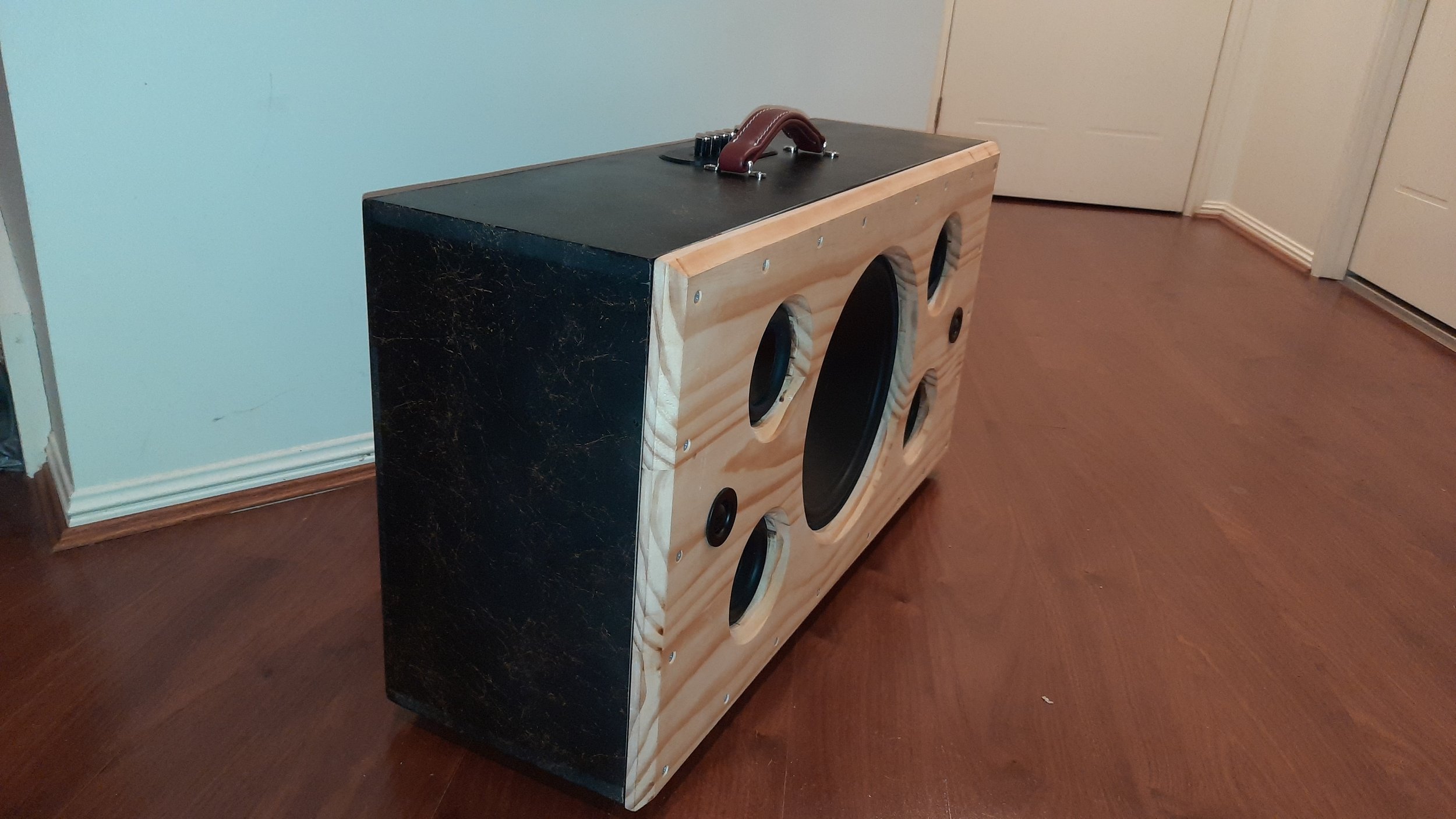
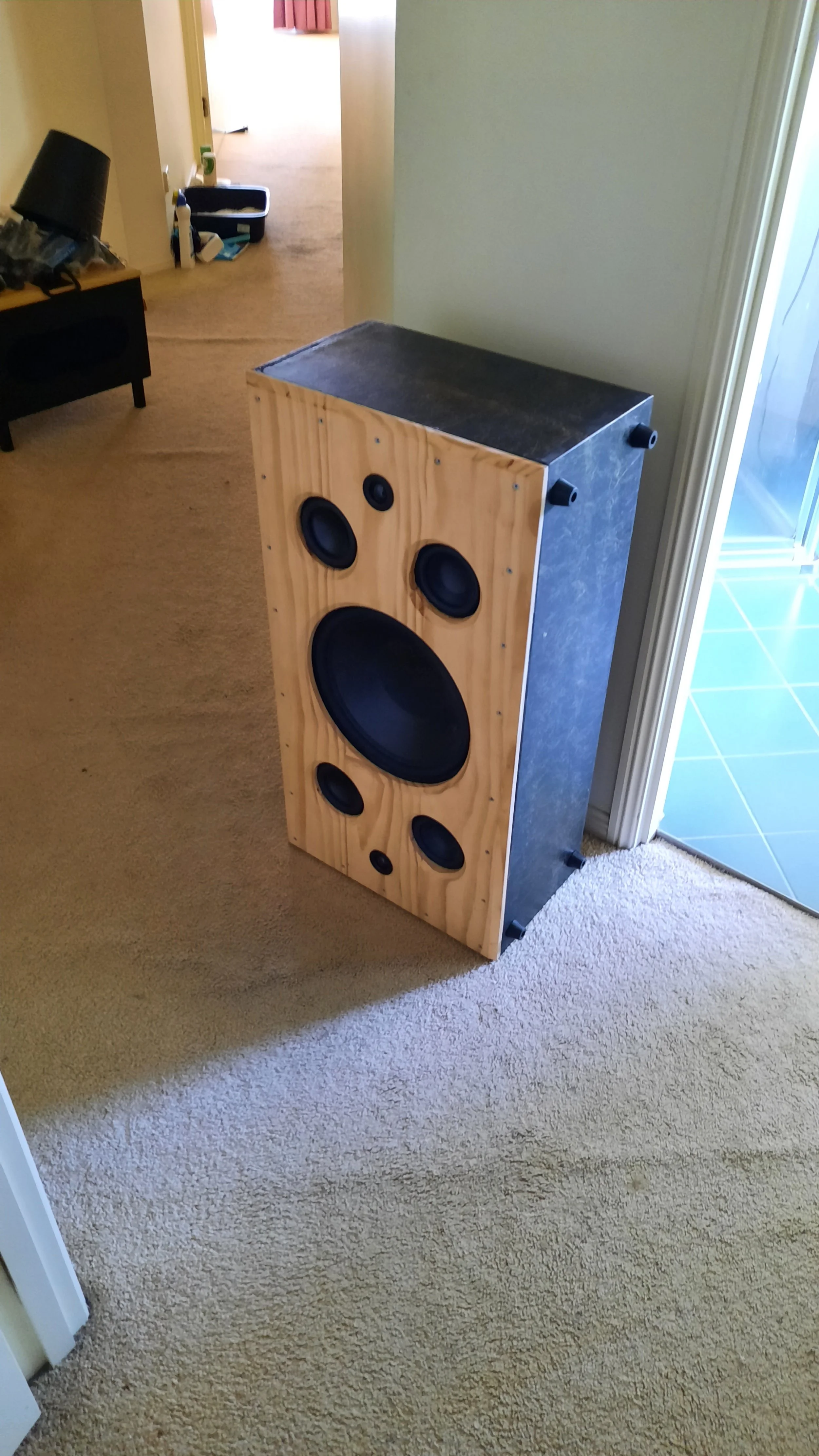
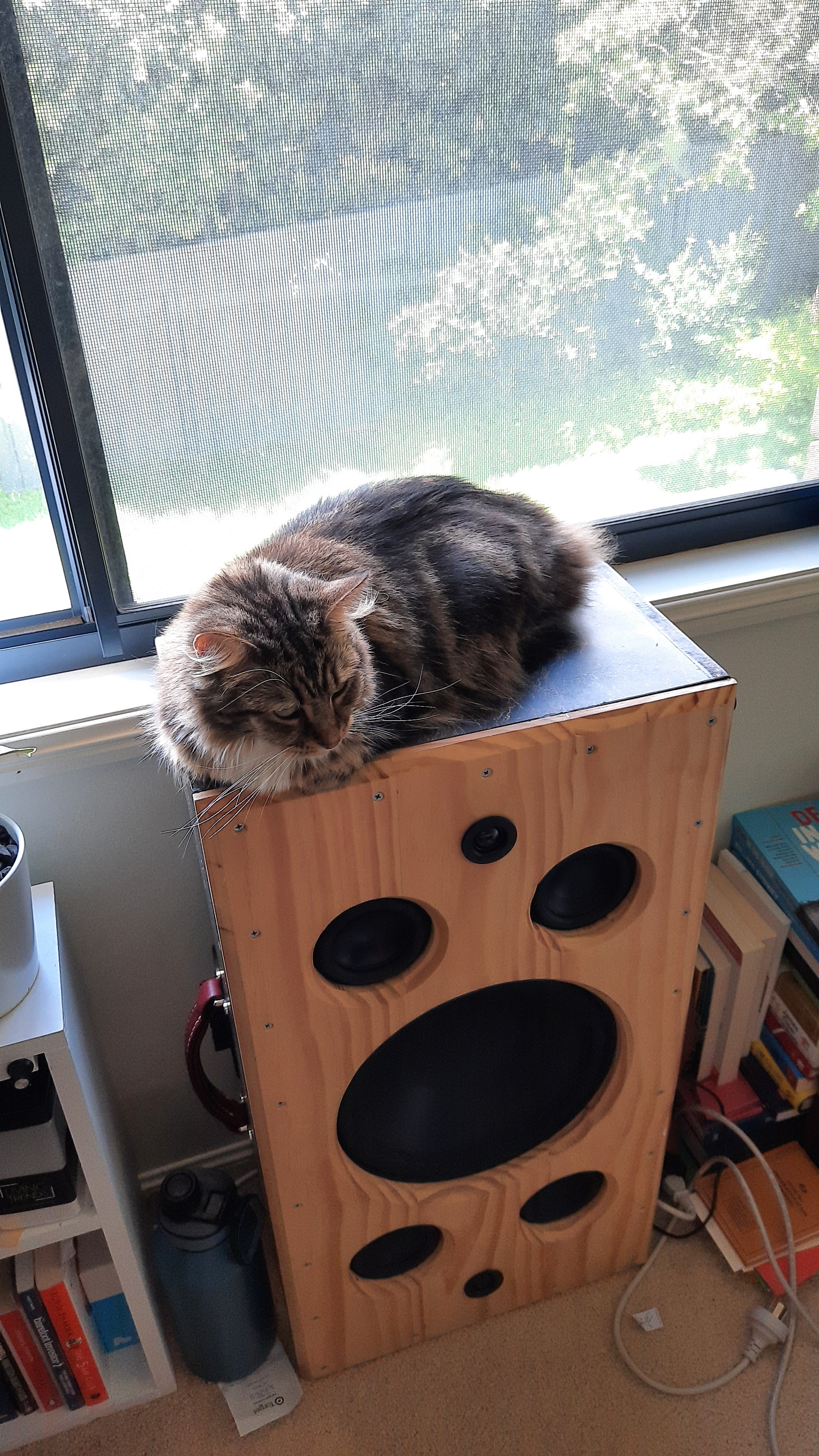

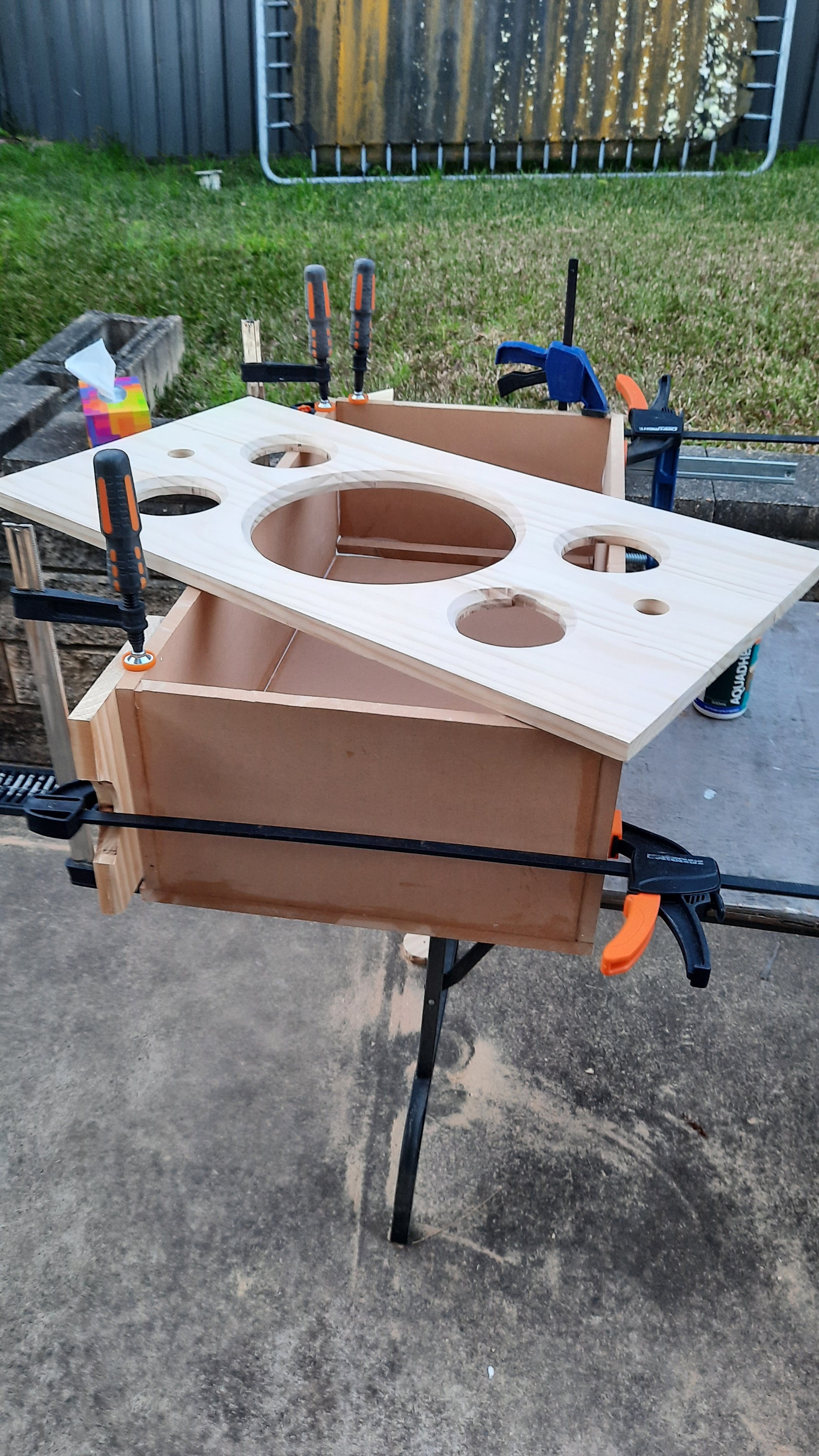
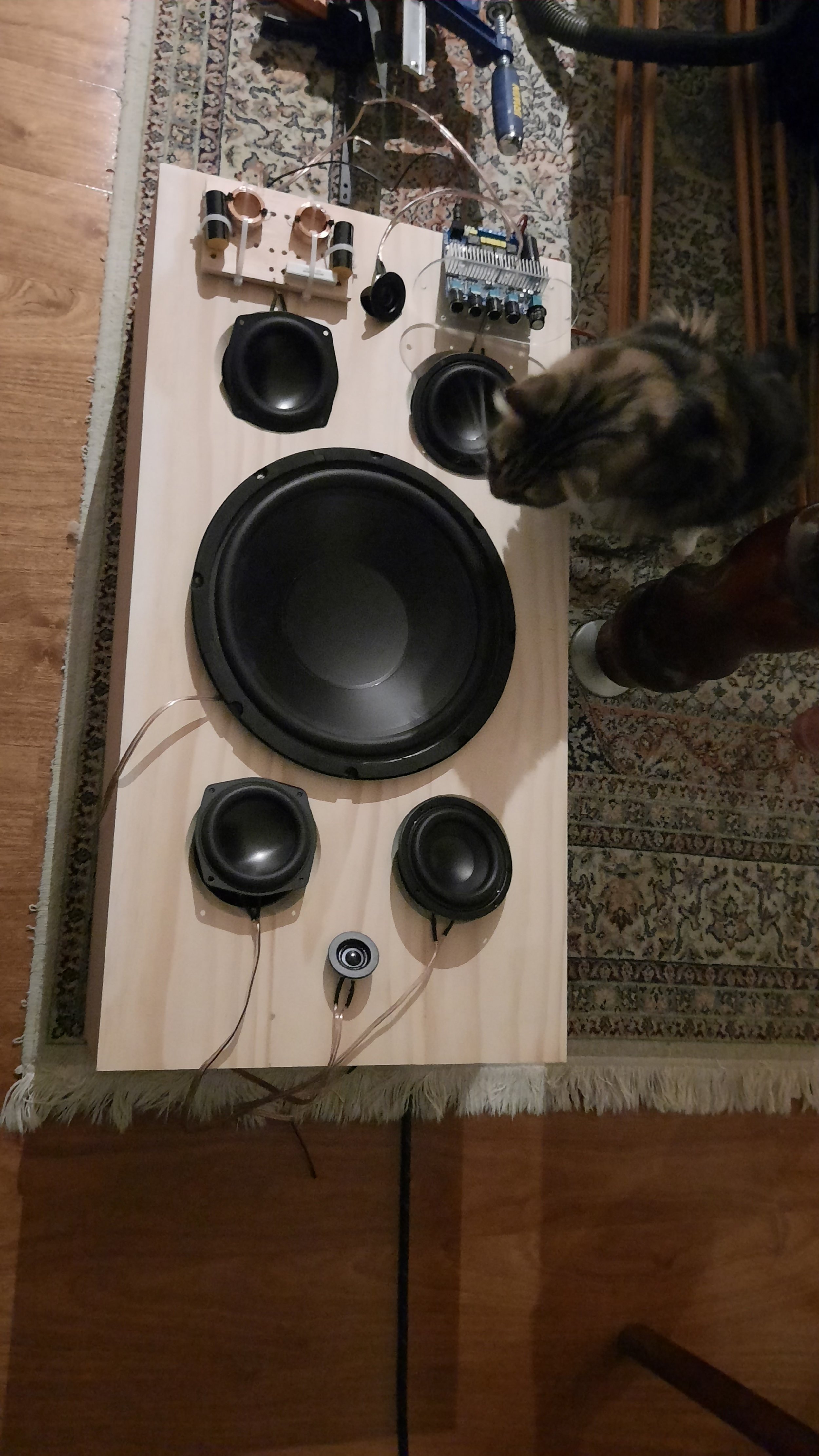
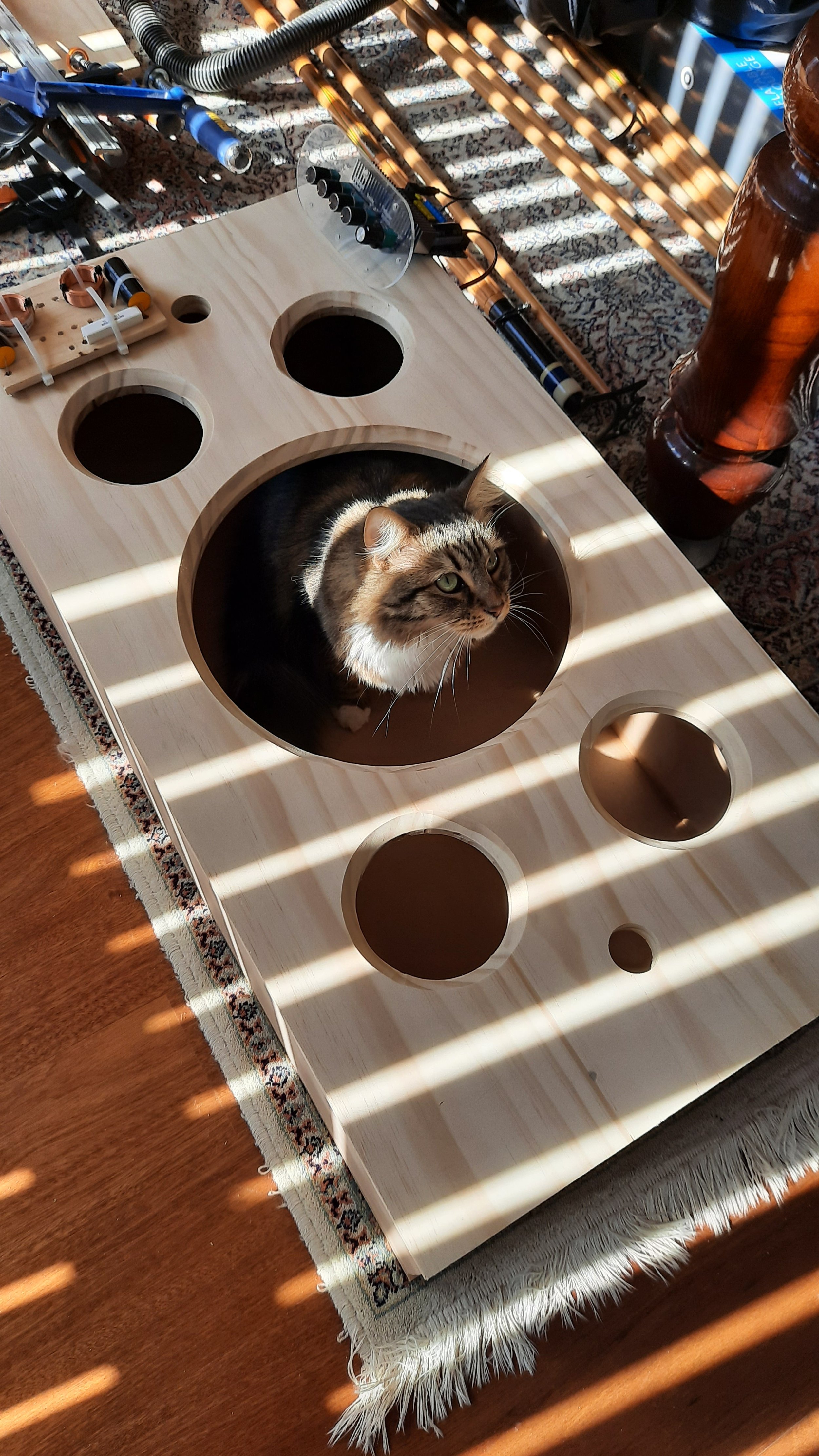
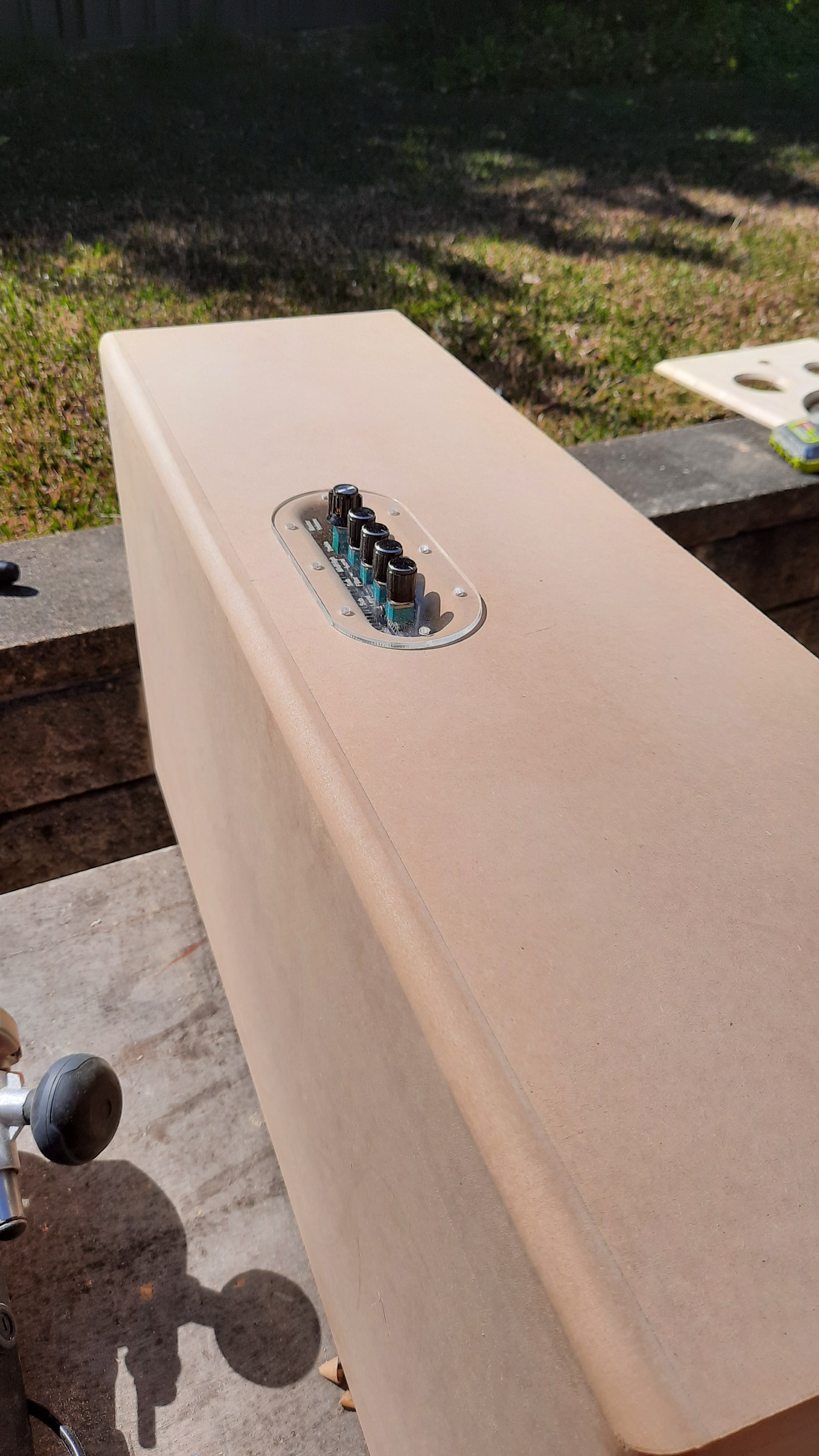
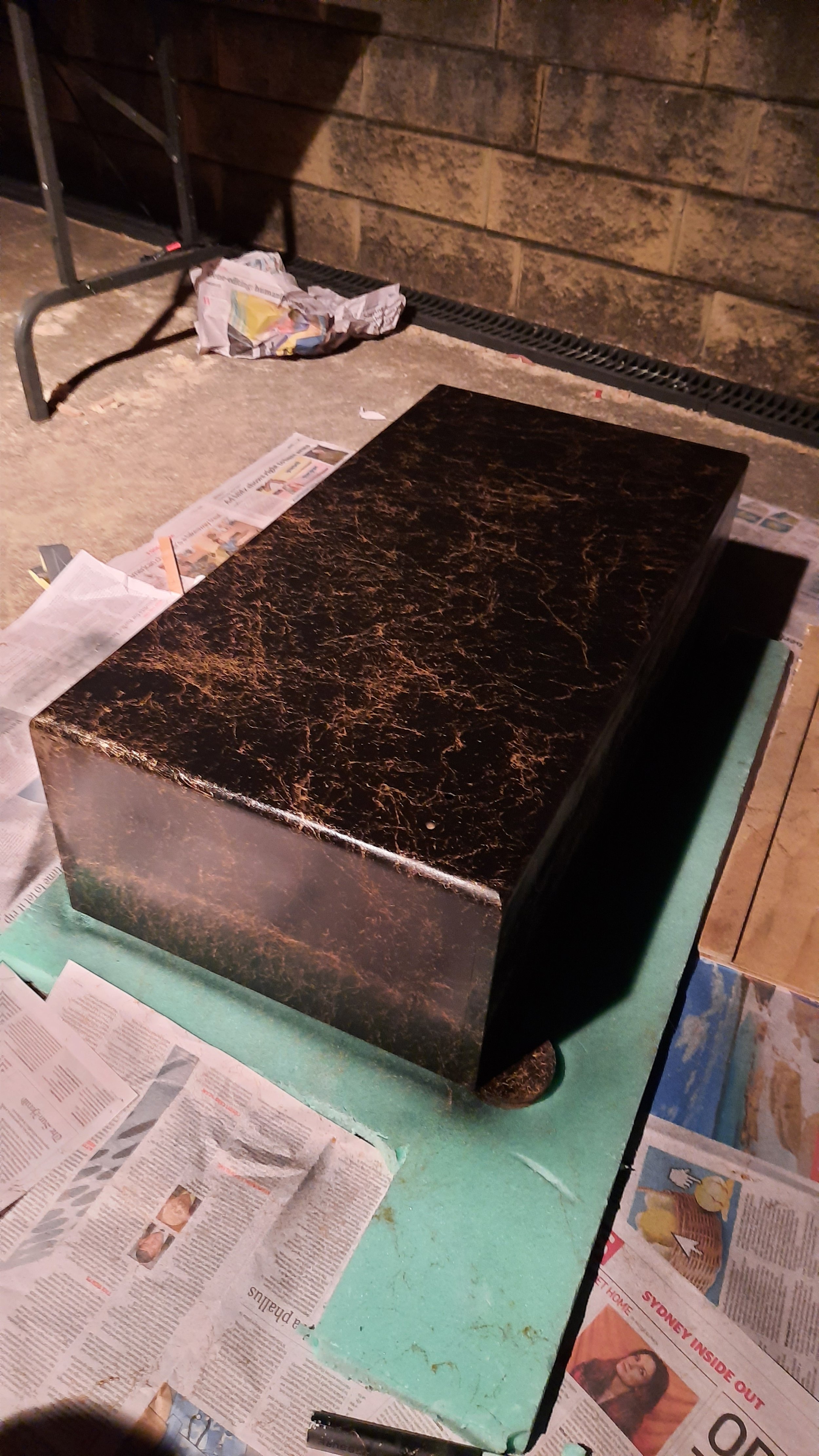
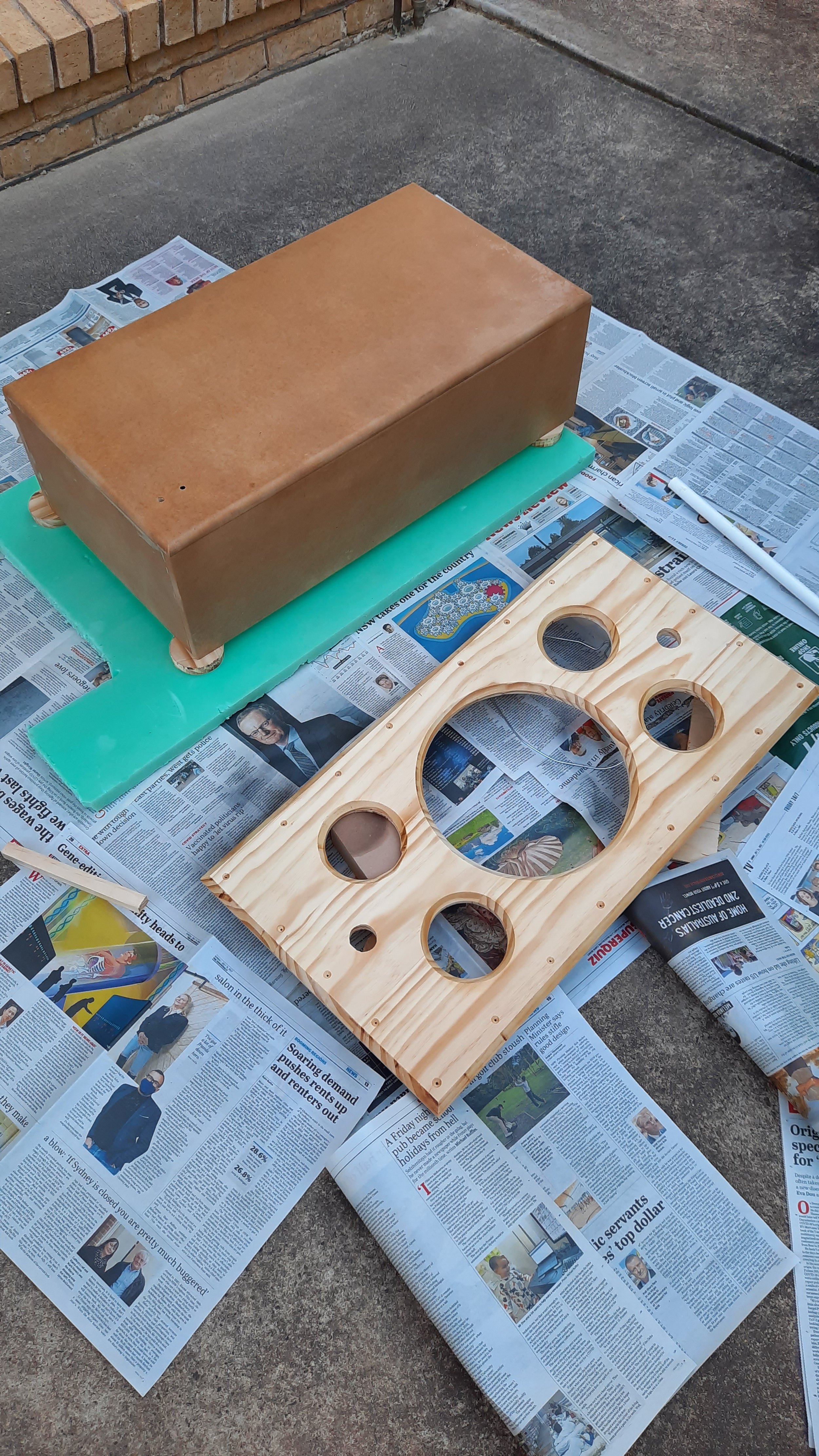
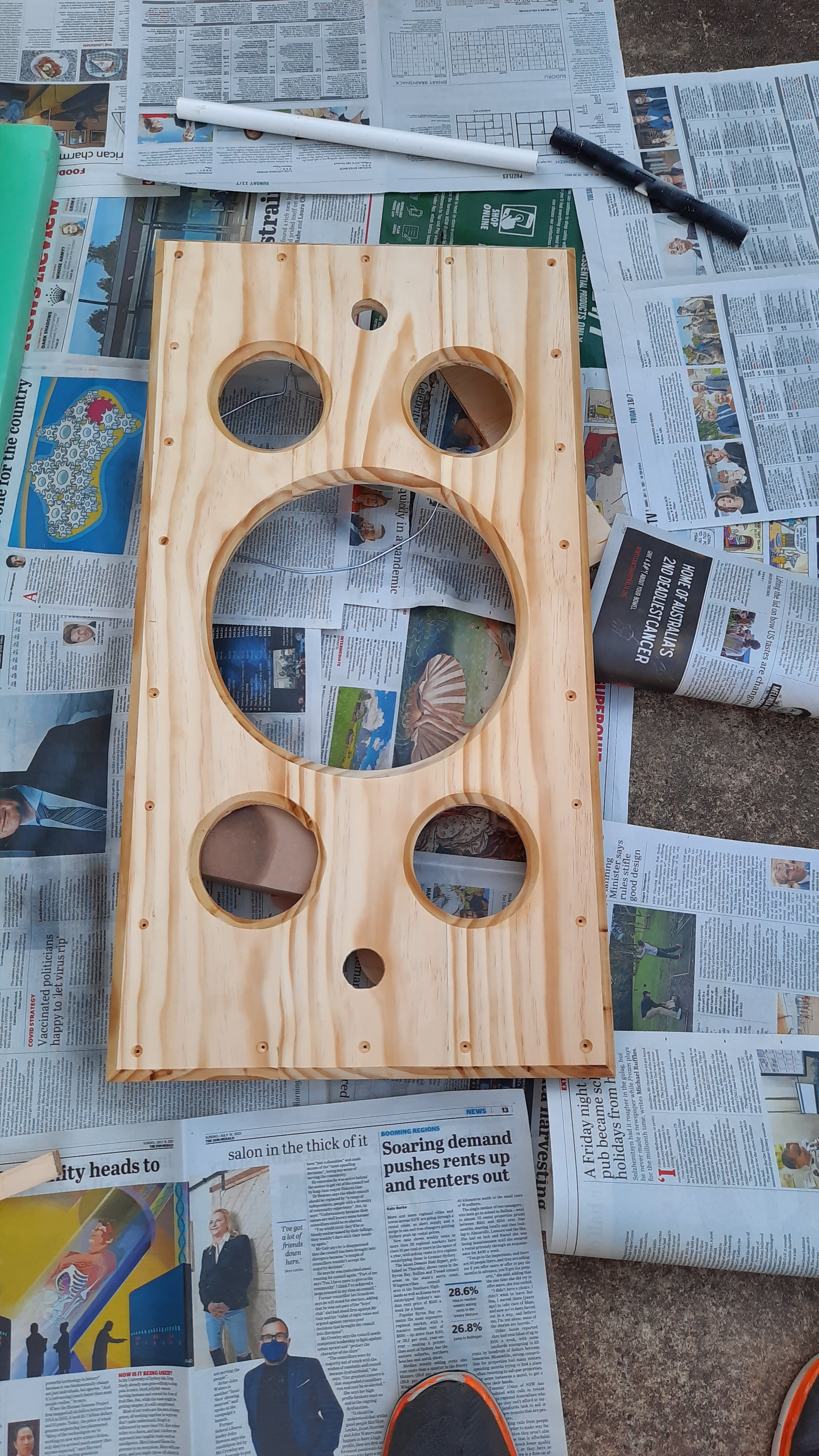
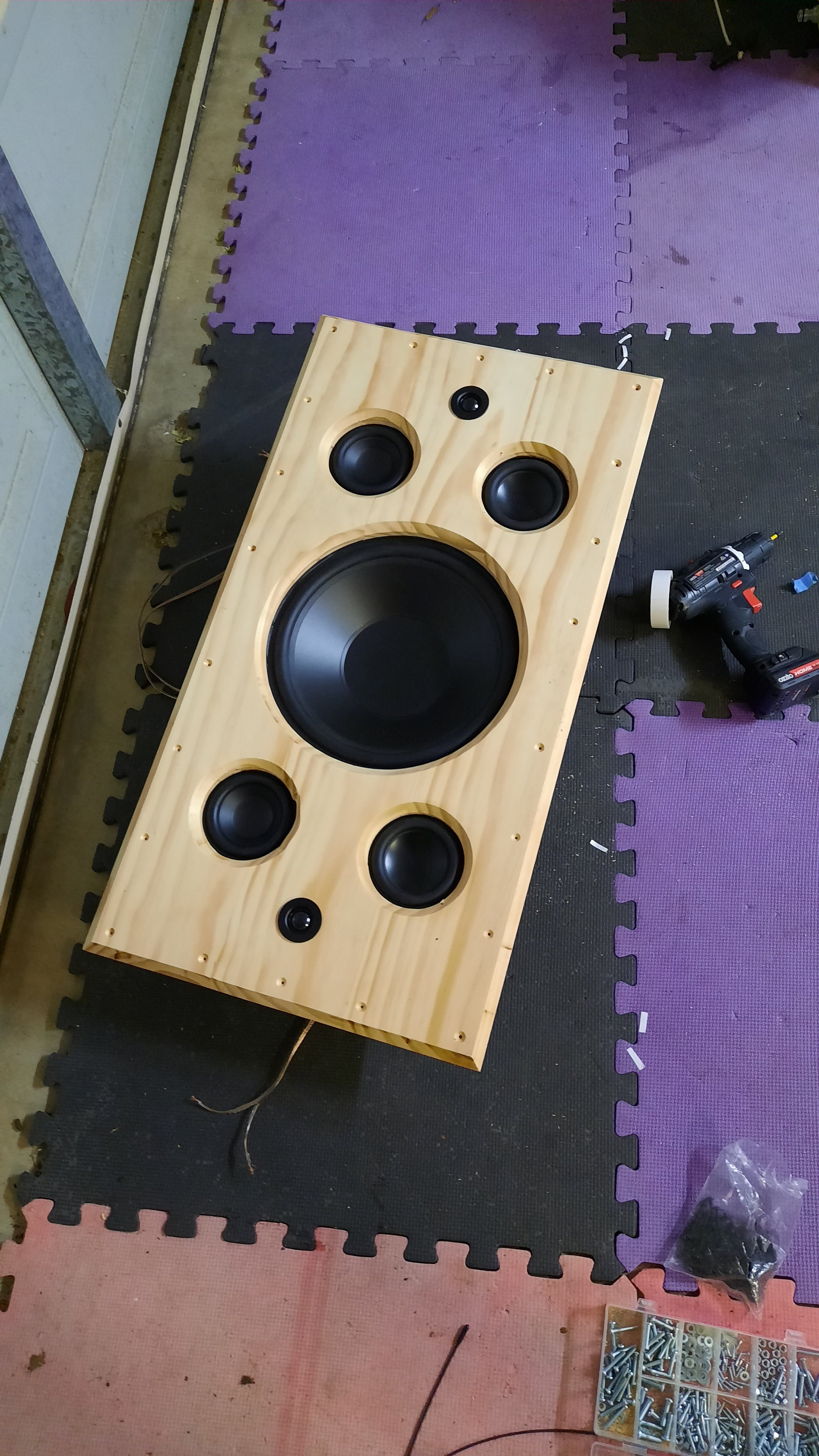
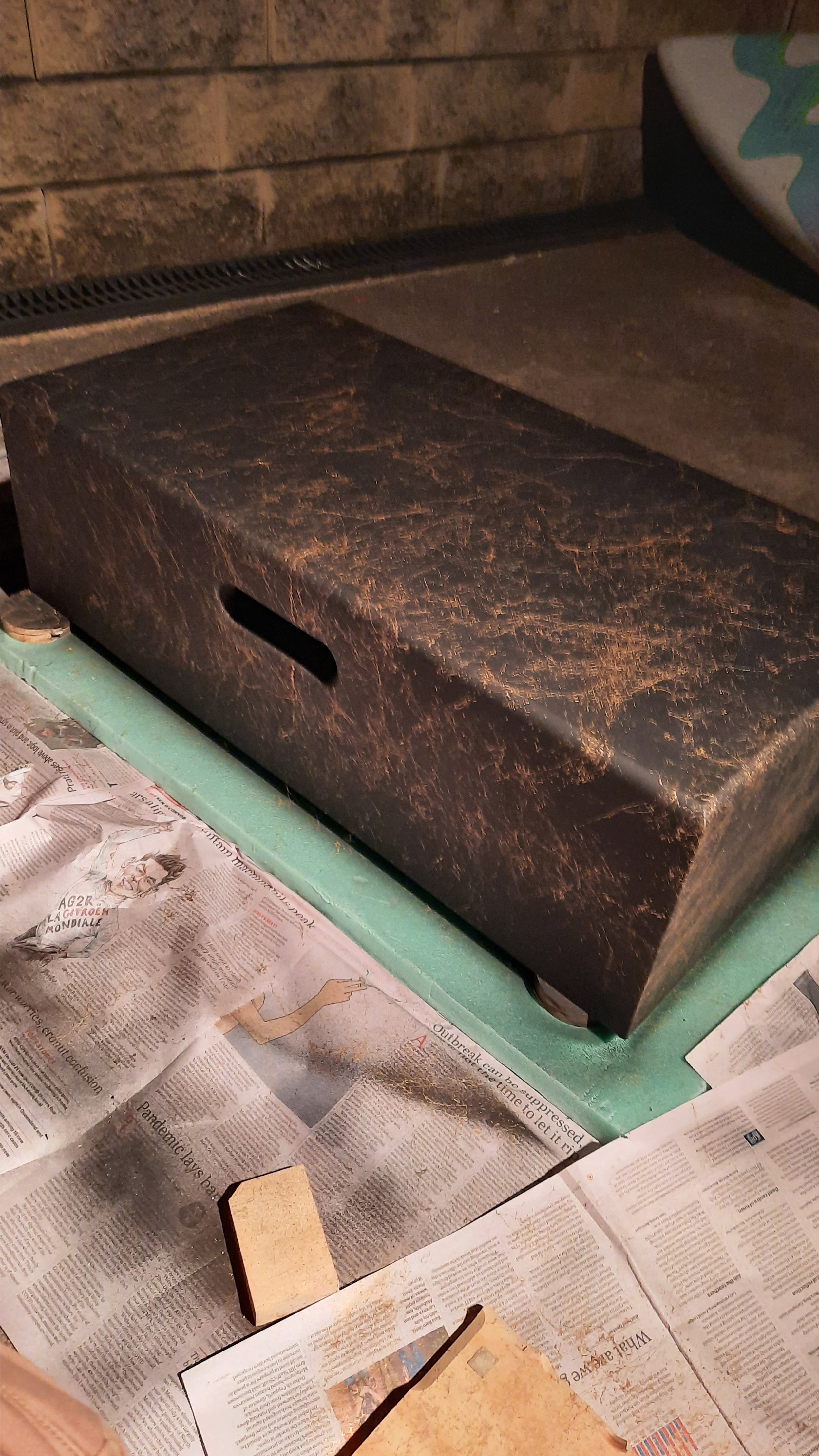

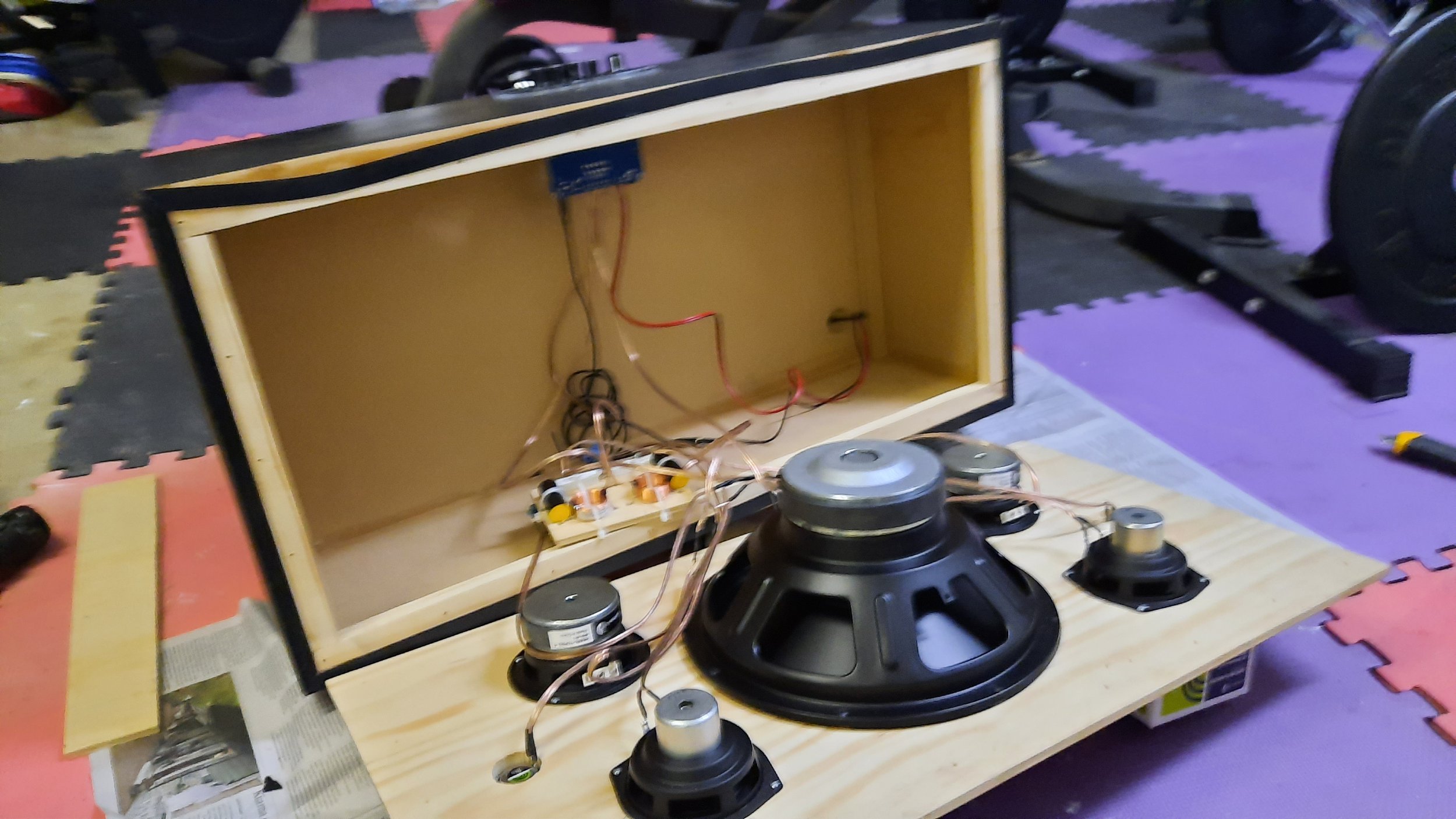
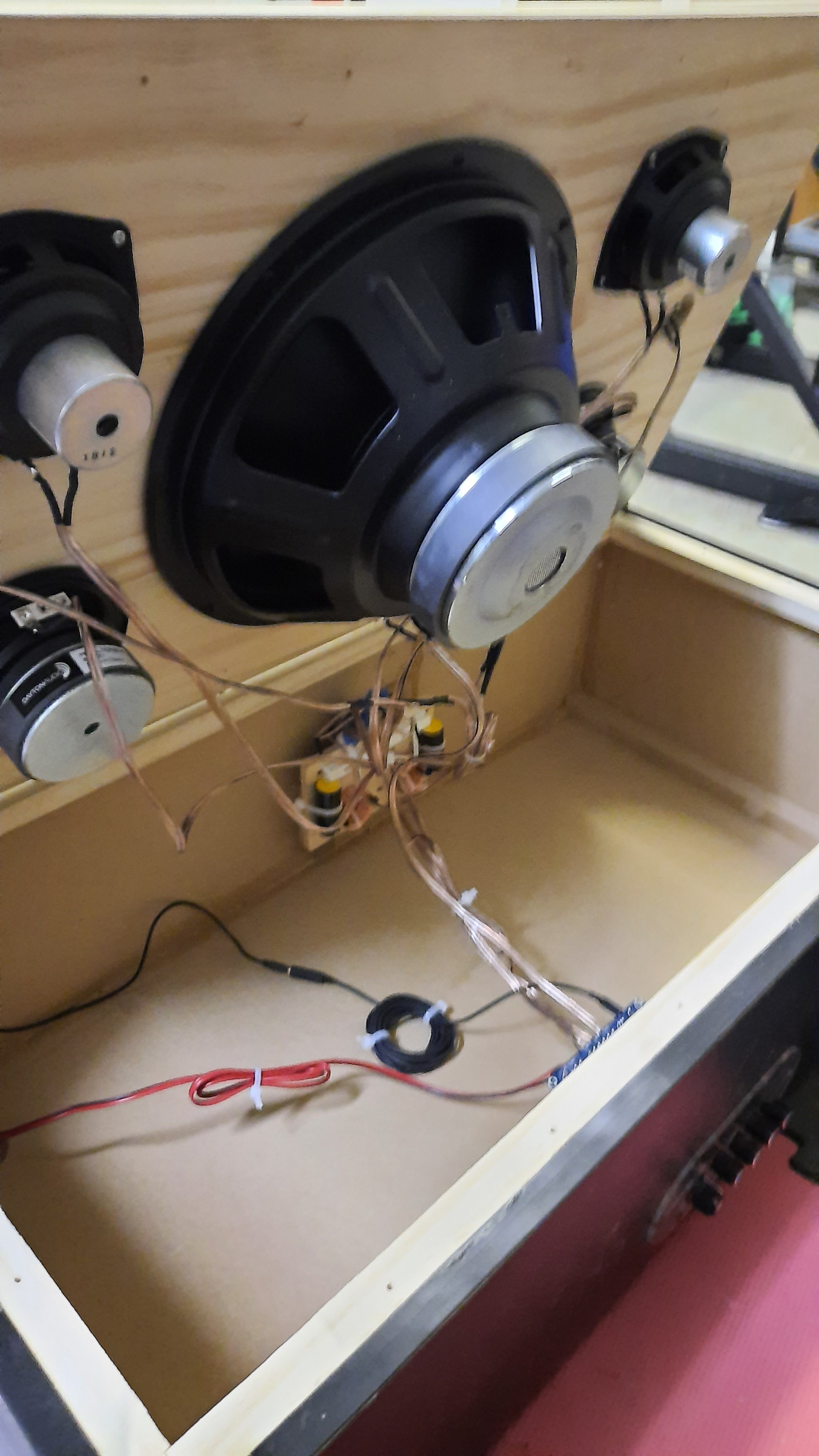
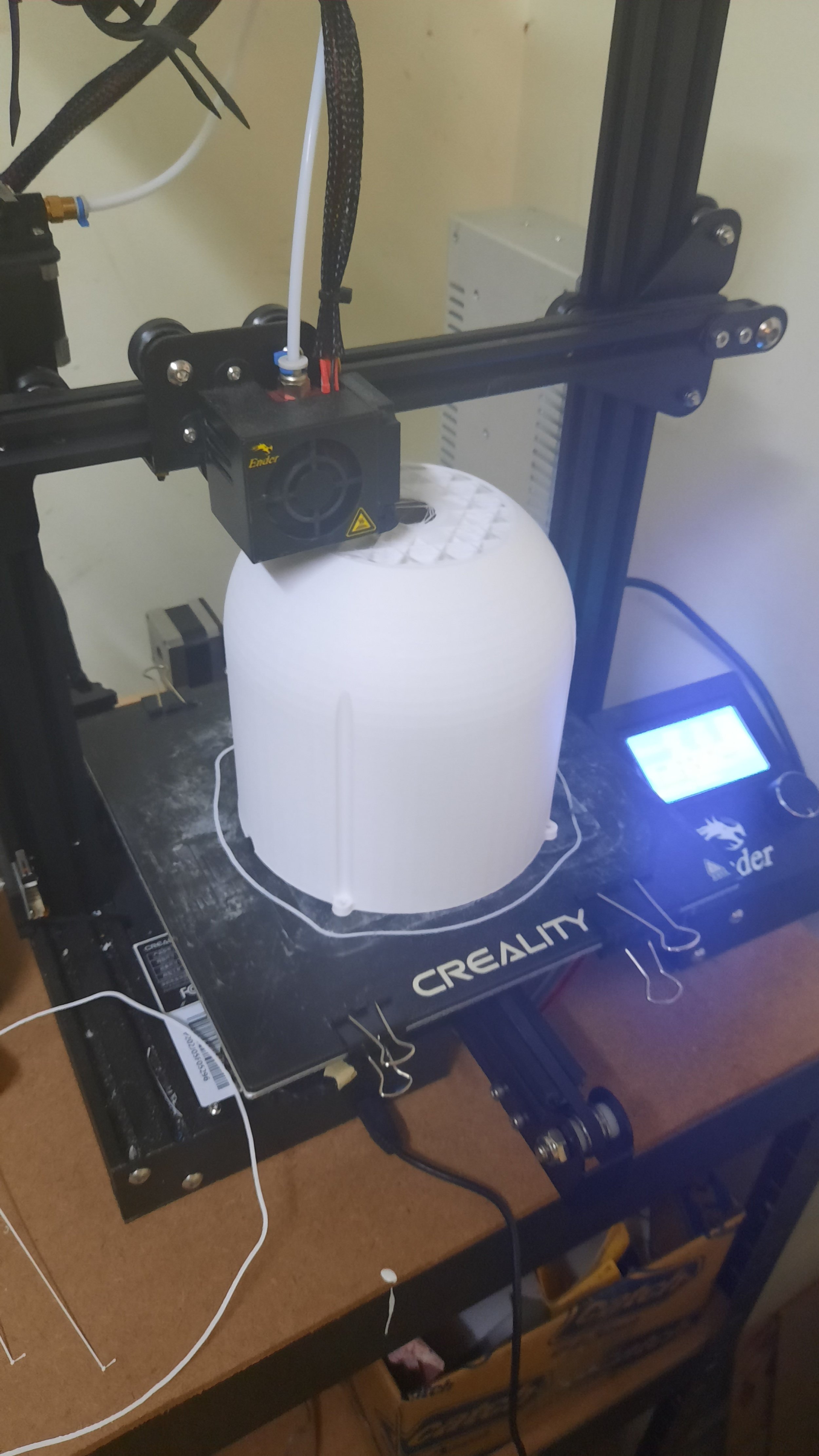
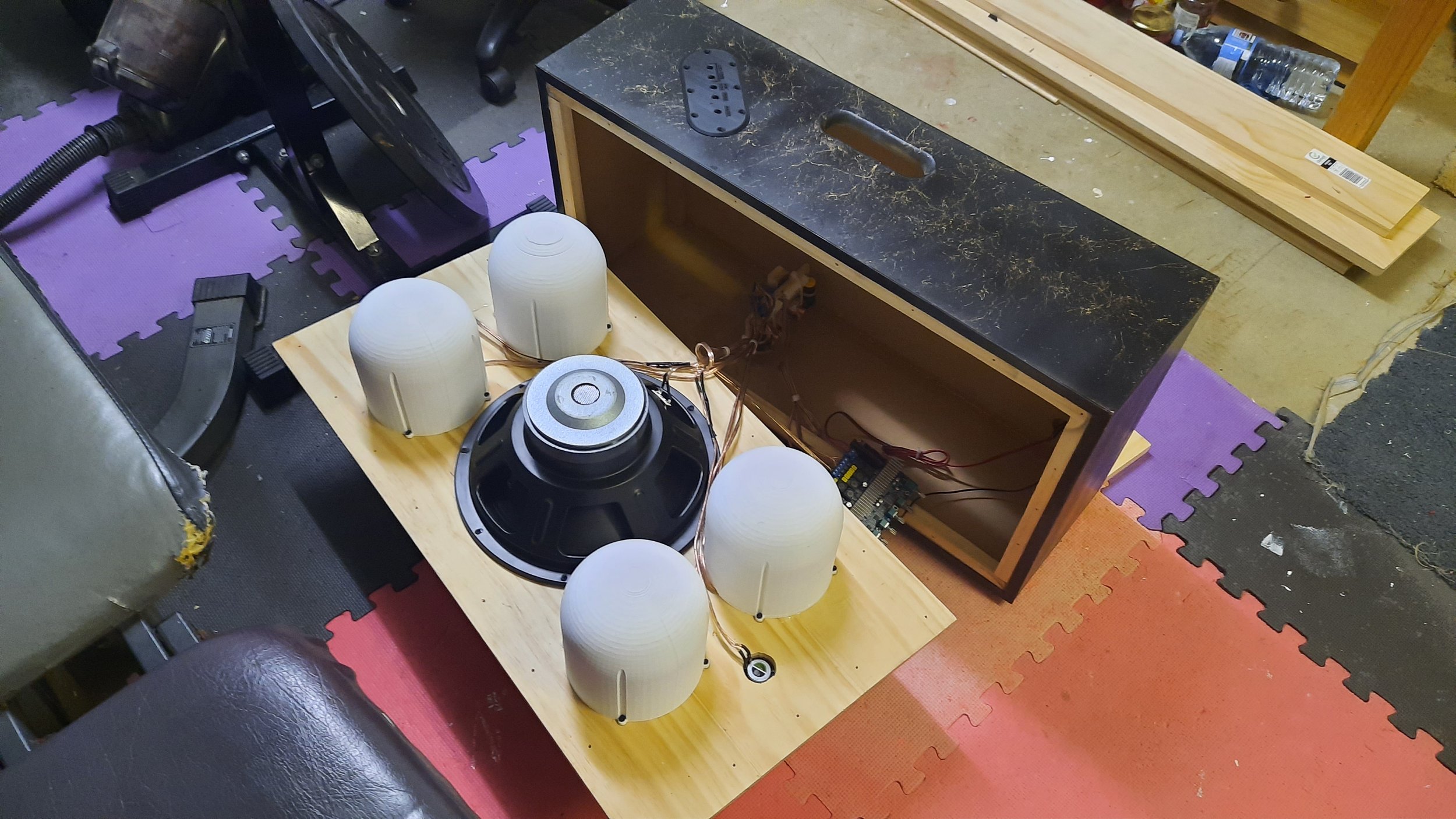
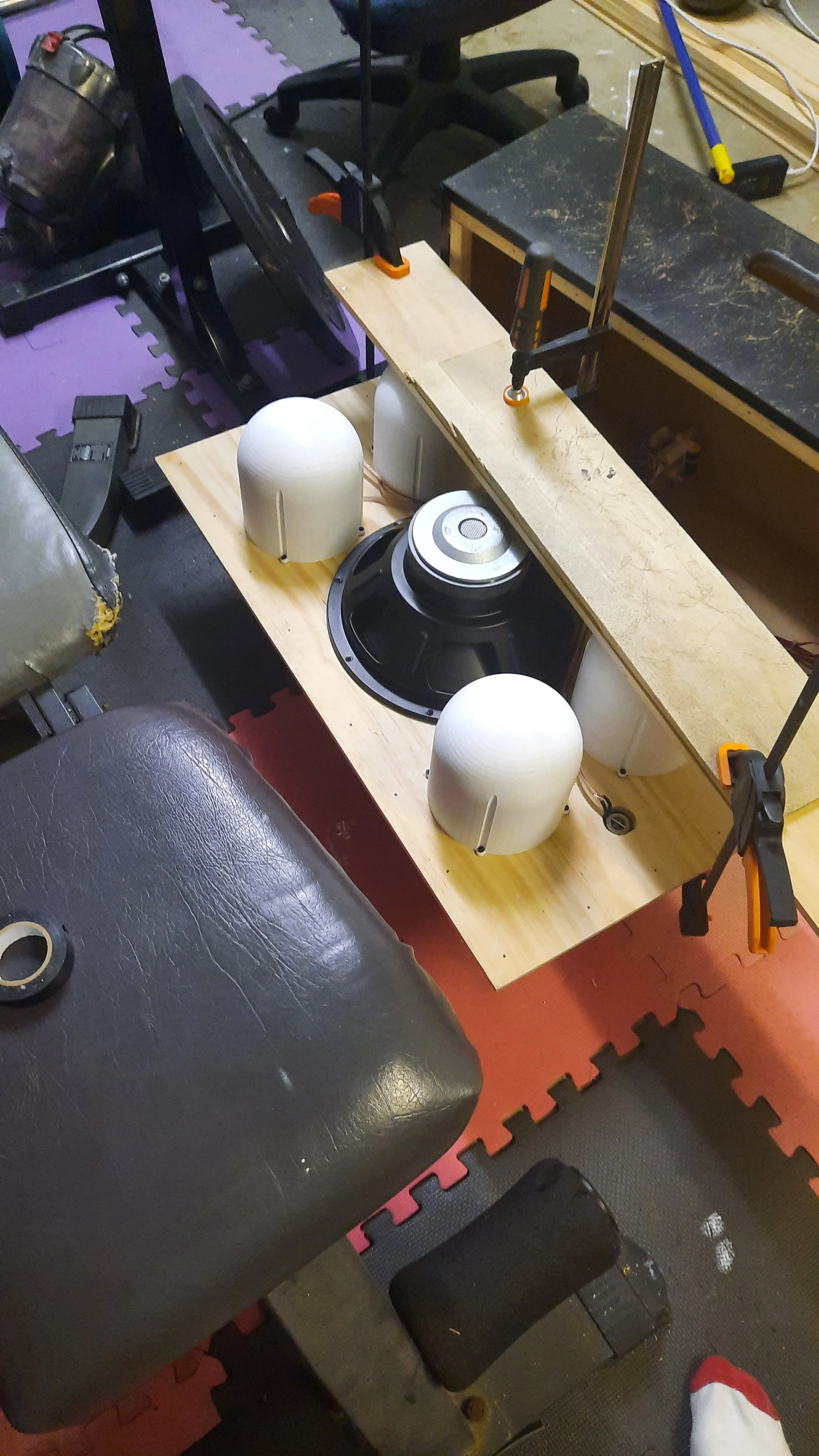
‘Multi-Bar’
A large soundbar built to sit just below the tv shelf.
Multi-bar can stand upright for a party, or be used as a stand for a computer monitor (removable handle).
Fully portable with up to 8 hours of play time. Plays surprisingly loud, with great balance, and a thumpy bass profile through extention with the vented configuration.
The tiny drivers on the sides are called ‘tweeters’. They produce the highest frequency sound, and contribute the most to the experience of sound direction. By placing them 90cm away from eachother, the sound feels very contextualised.
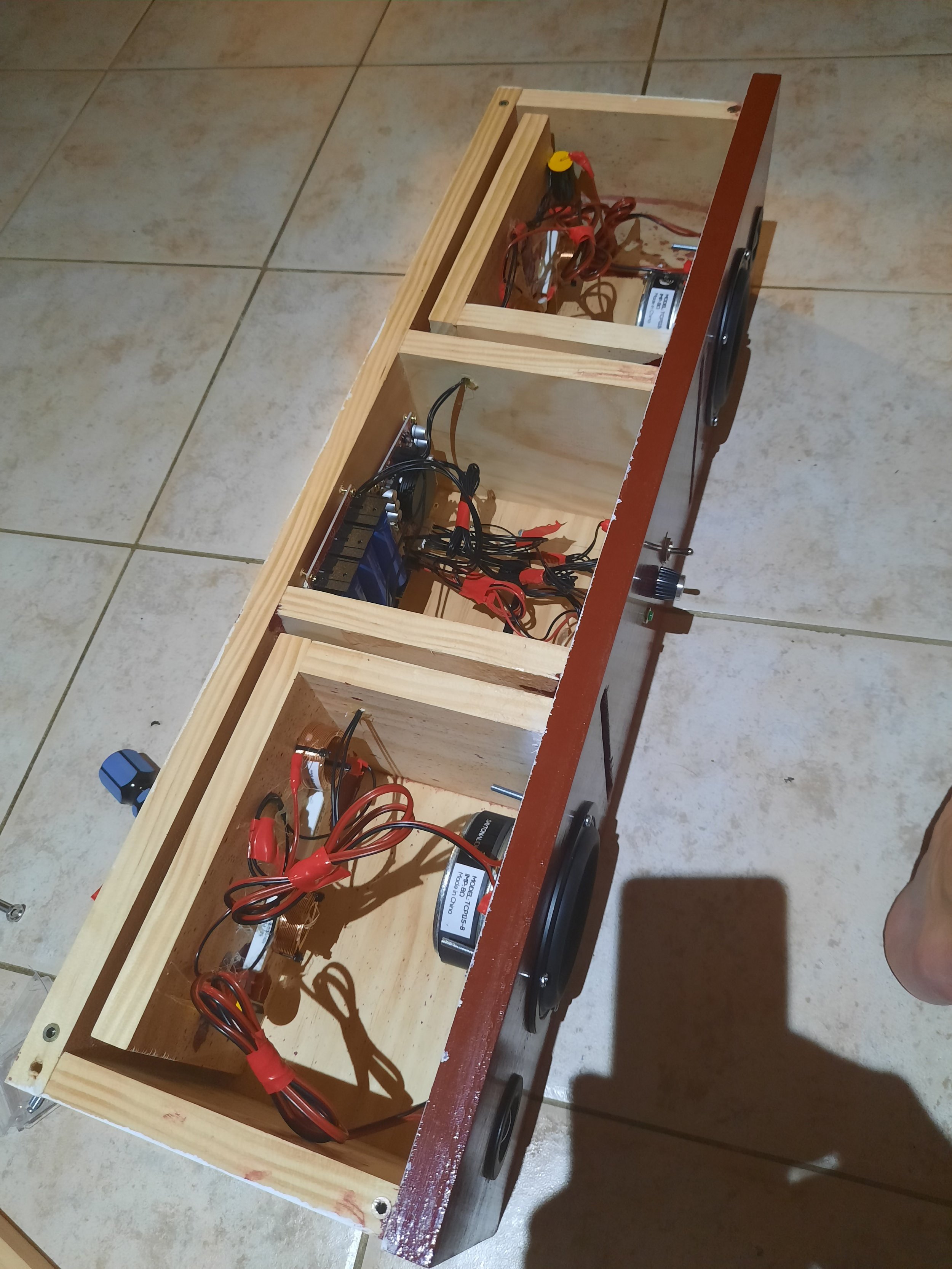
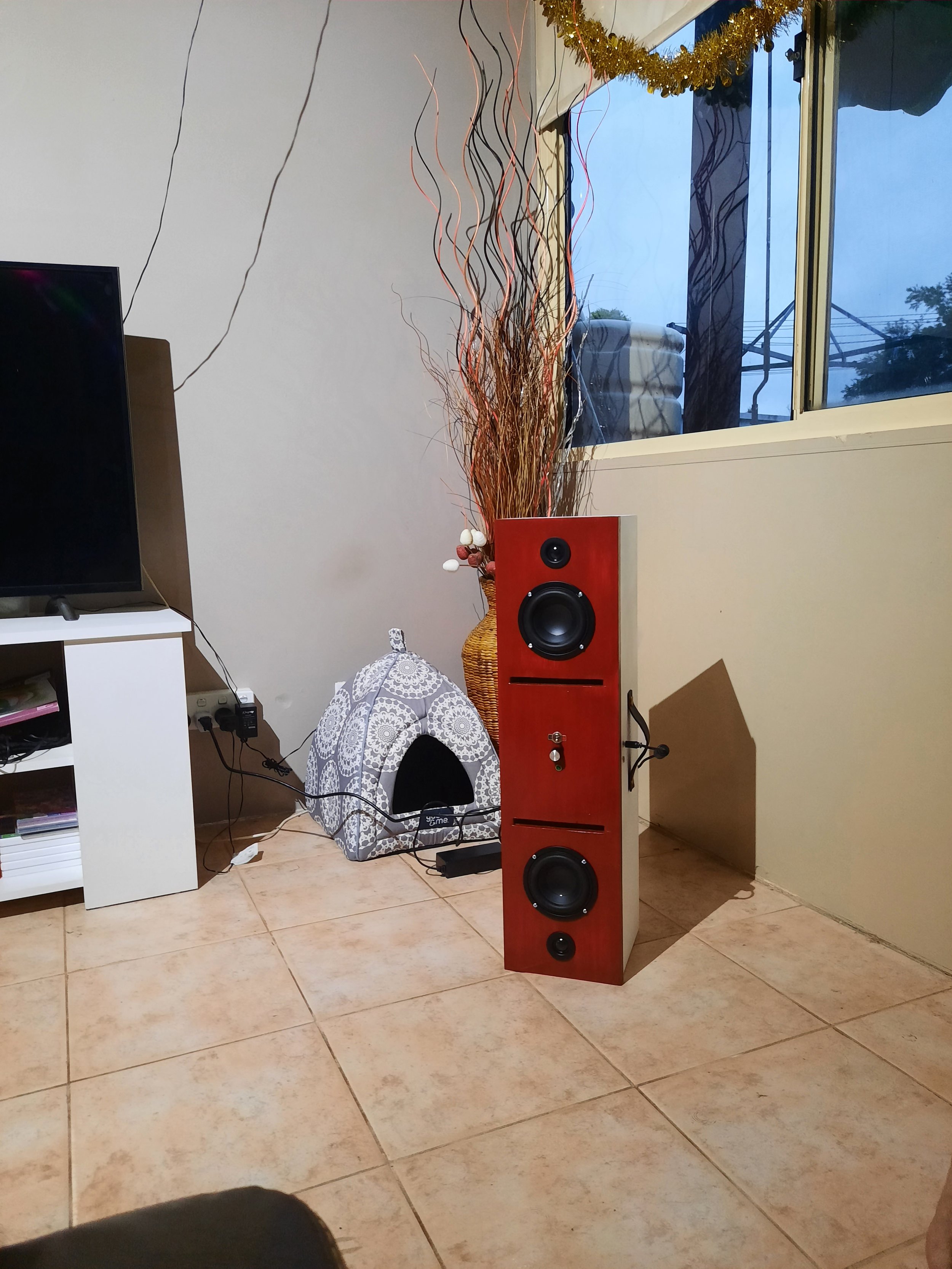
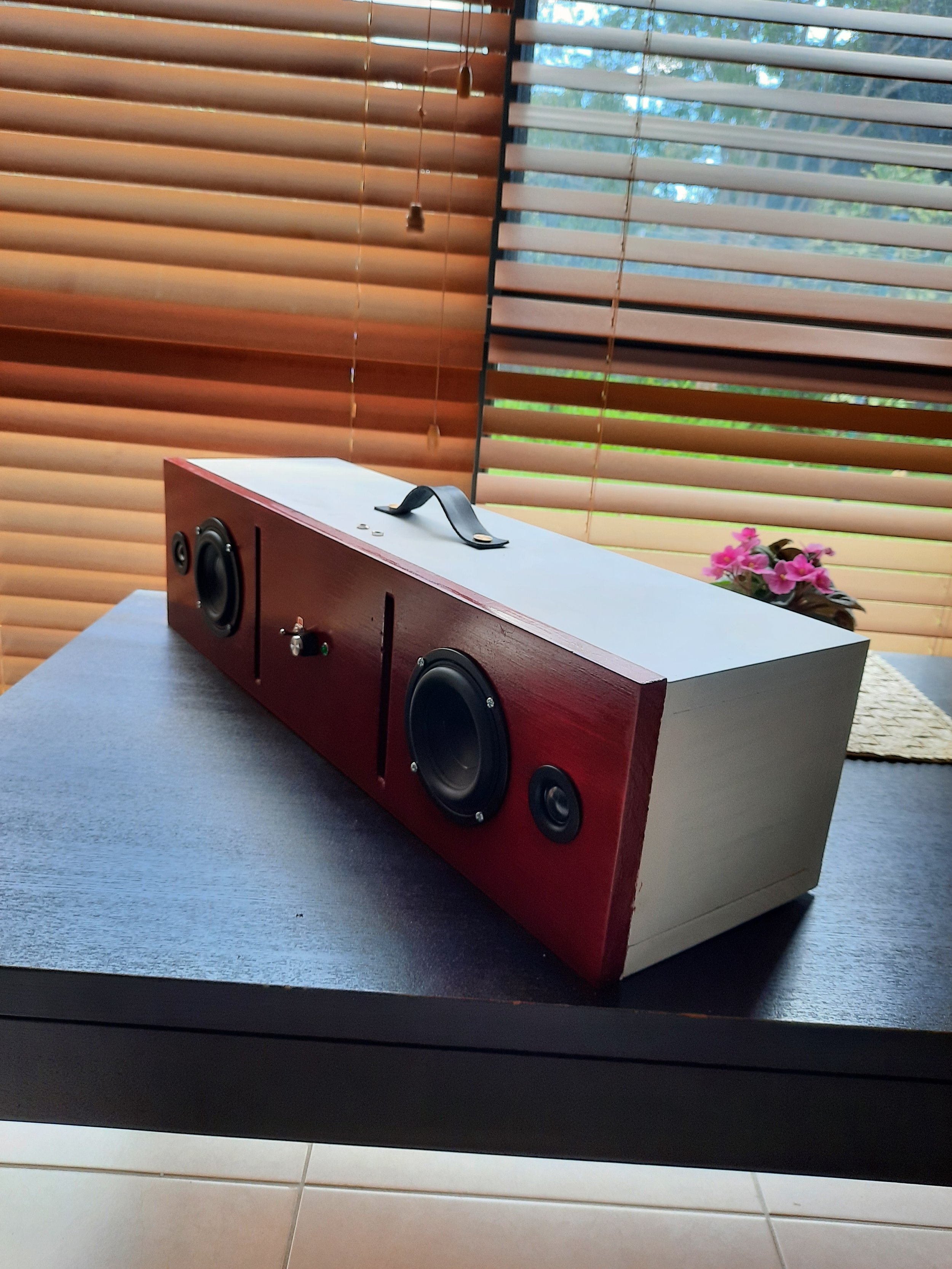
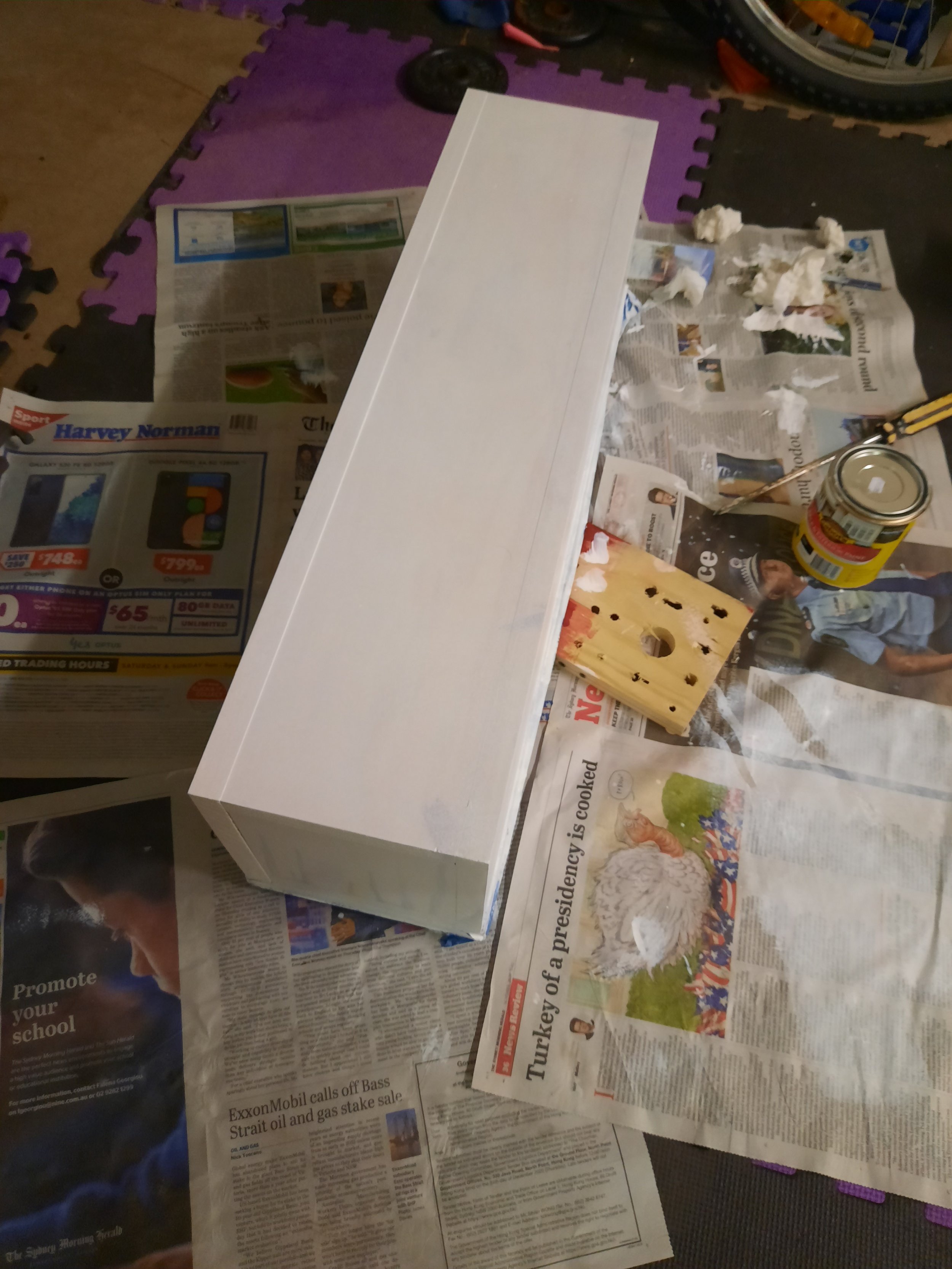
Panel Diaphragm Speakers
Suspended by fishing line and harnessed to a pvc pipe, these foam squares produce extremely clear sound. They incorporate a type of tech called “Exciters”, which work essentially as a coneless speaker driver. The vibrations are applied directly to the panels, which then reverberate the audio directly infront.
This system is far less common than a typical speaker driver. This is due to several limitations:
Size, this set-up is enormous, and is difficult to position in a room.
Output, this system is very inefficient
Directional sound - standing parallel with the speakers produces tinny, hollow audio
Bass extension is very poor, and struggles to reach below 150hz.
However, there are some key benefits:
The audio is extraordinarily clear. So long as you’re positioned in-front of it, the sound is bold, and rich. Furthermore, the diaphragms are so large in comparison to a typical speaker cone, the sound is extremely contextualised. I would describe the listening experience to be short of a life performance, as the surface area of each panel’s reverberation imitates the effect instruments have in a room.
They are very cheap! High quality exciters are very inexpensive, the ones used here were a measly $24 each. The high-density foam is even cheaper. Assuming you already have an amp, and access equipment for soldering and foam forming, this is the extent of the cost.
Ultimately, this was a very fun and enlightening project, and I learnt much about audio through it.





